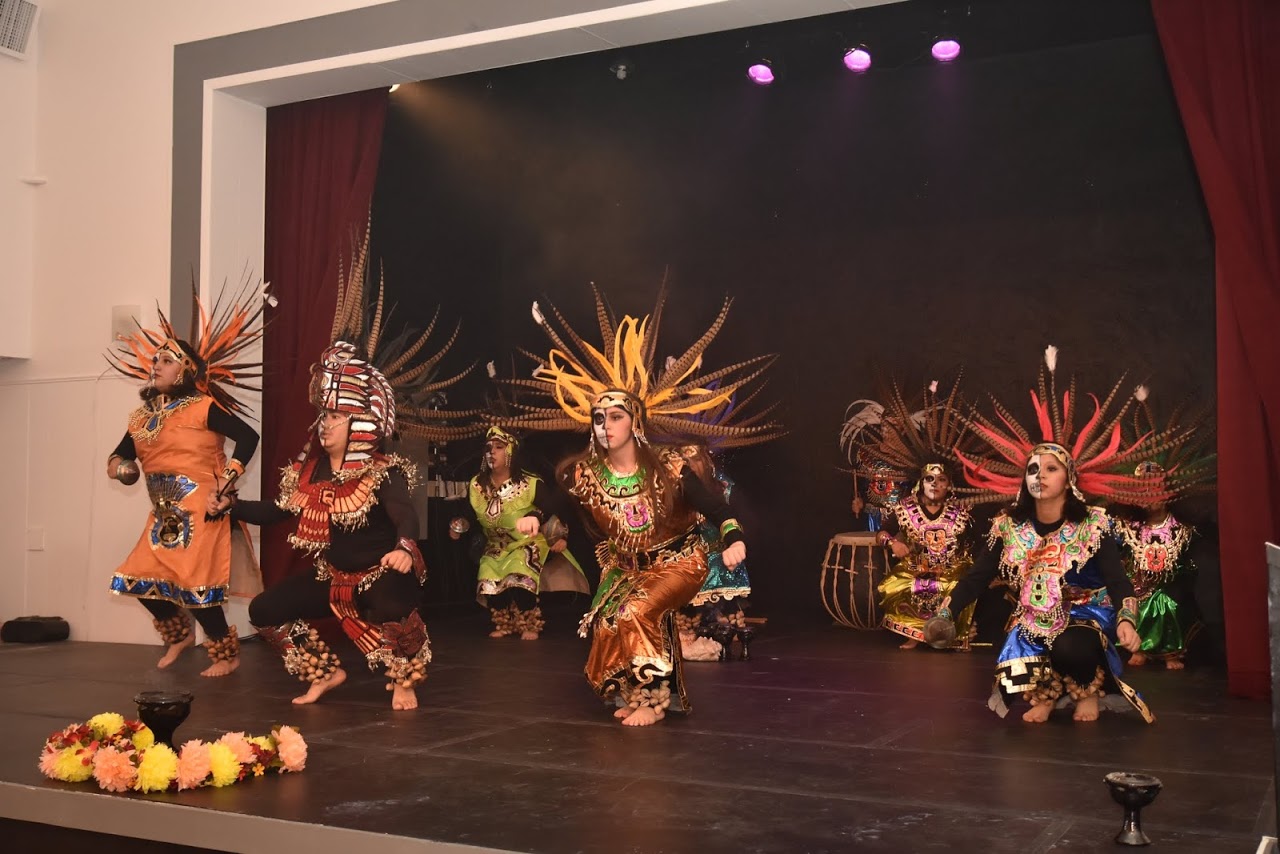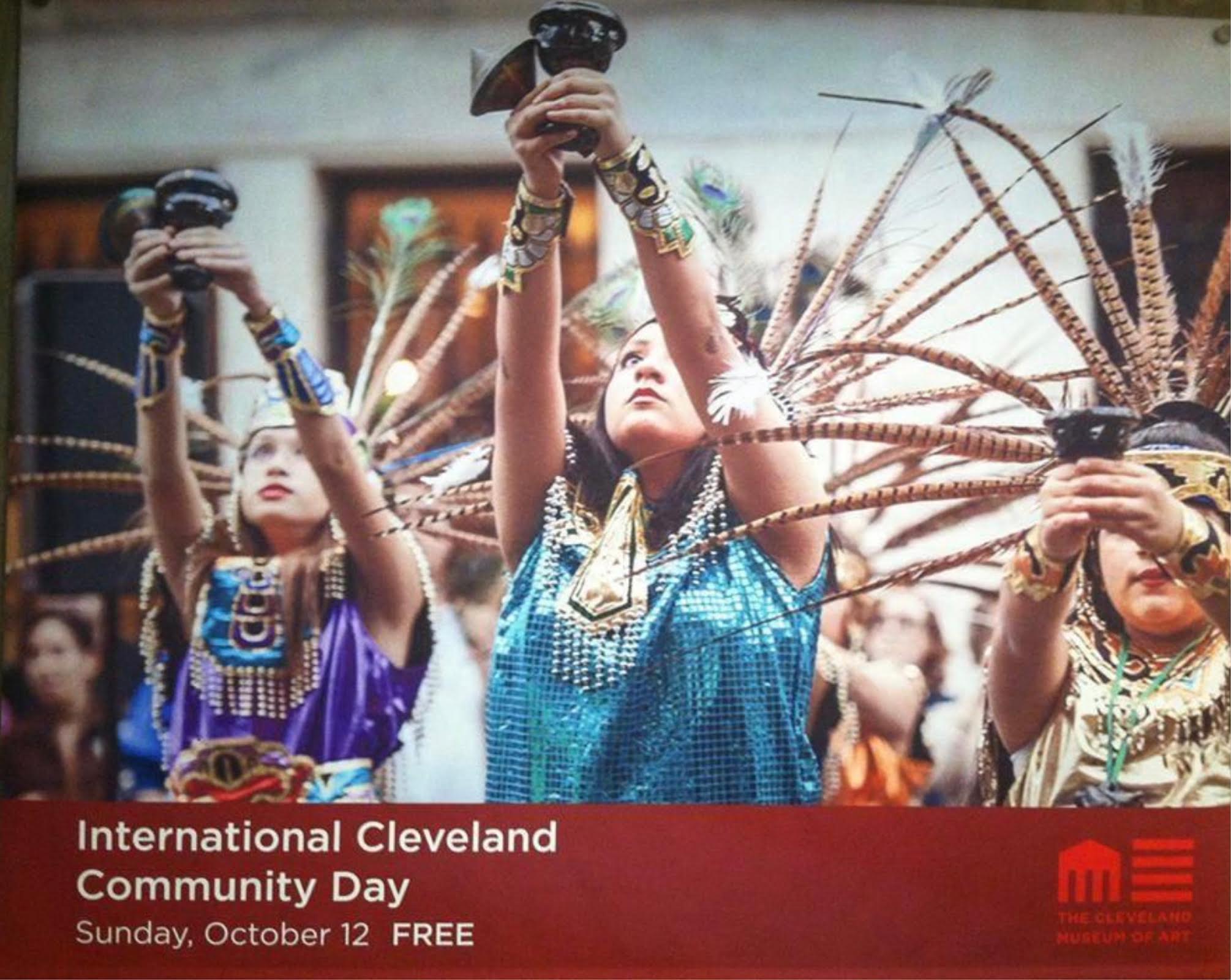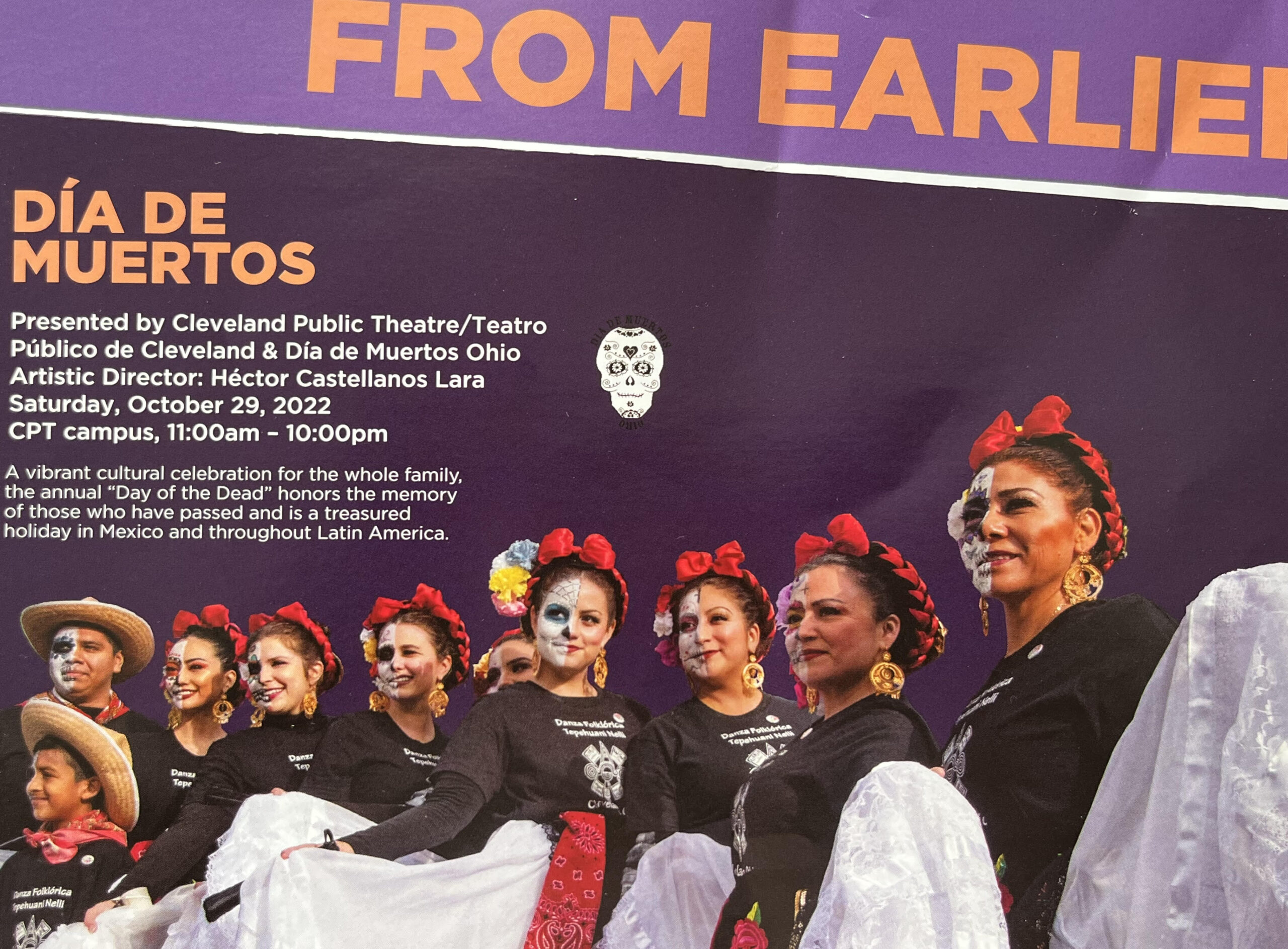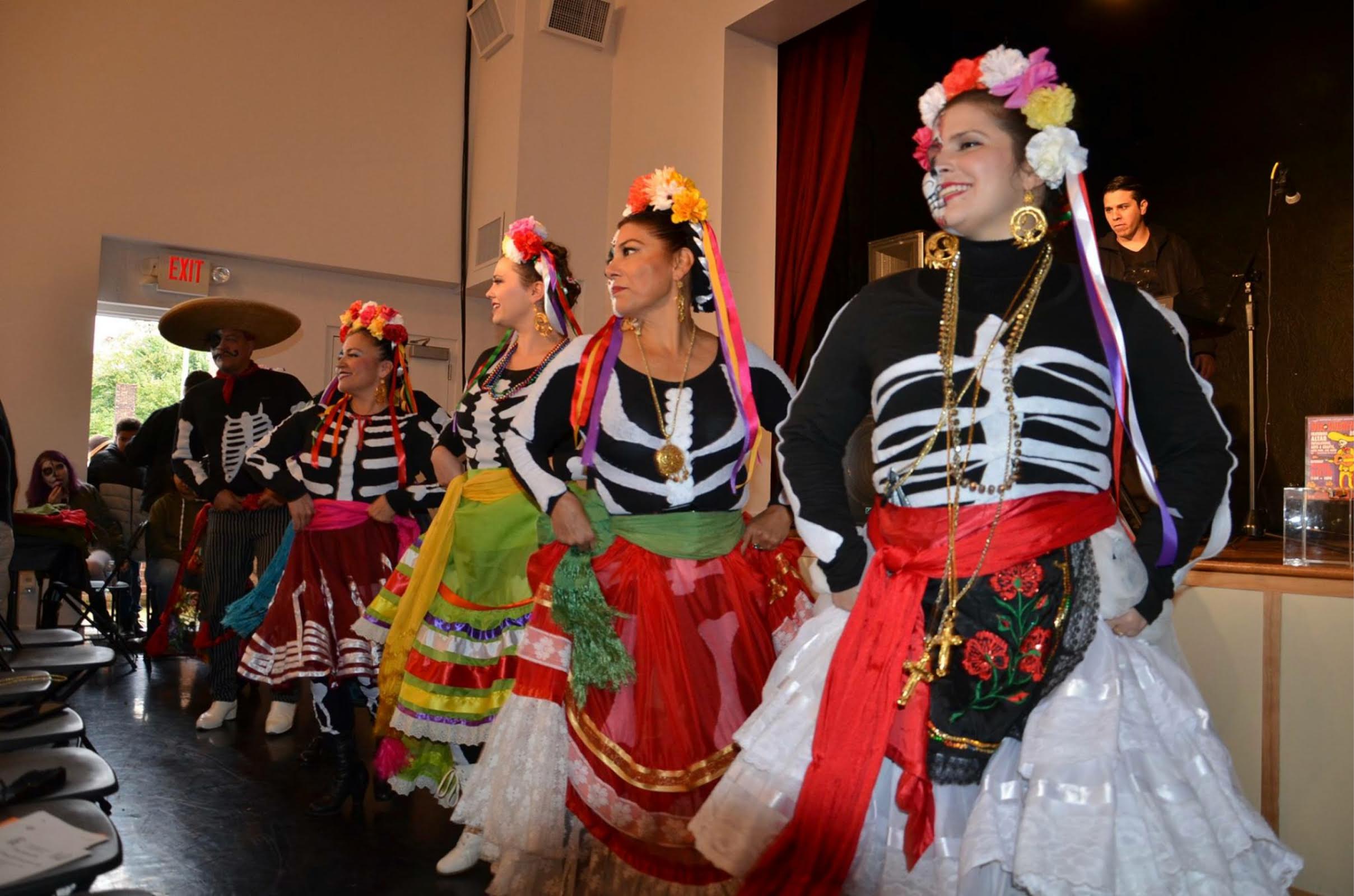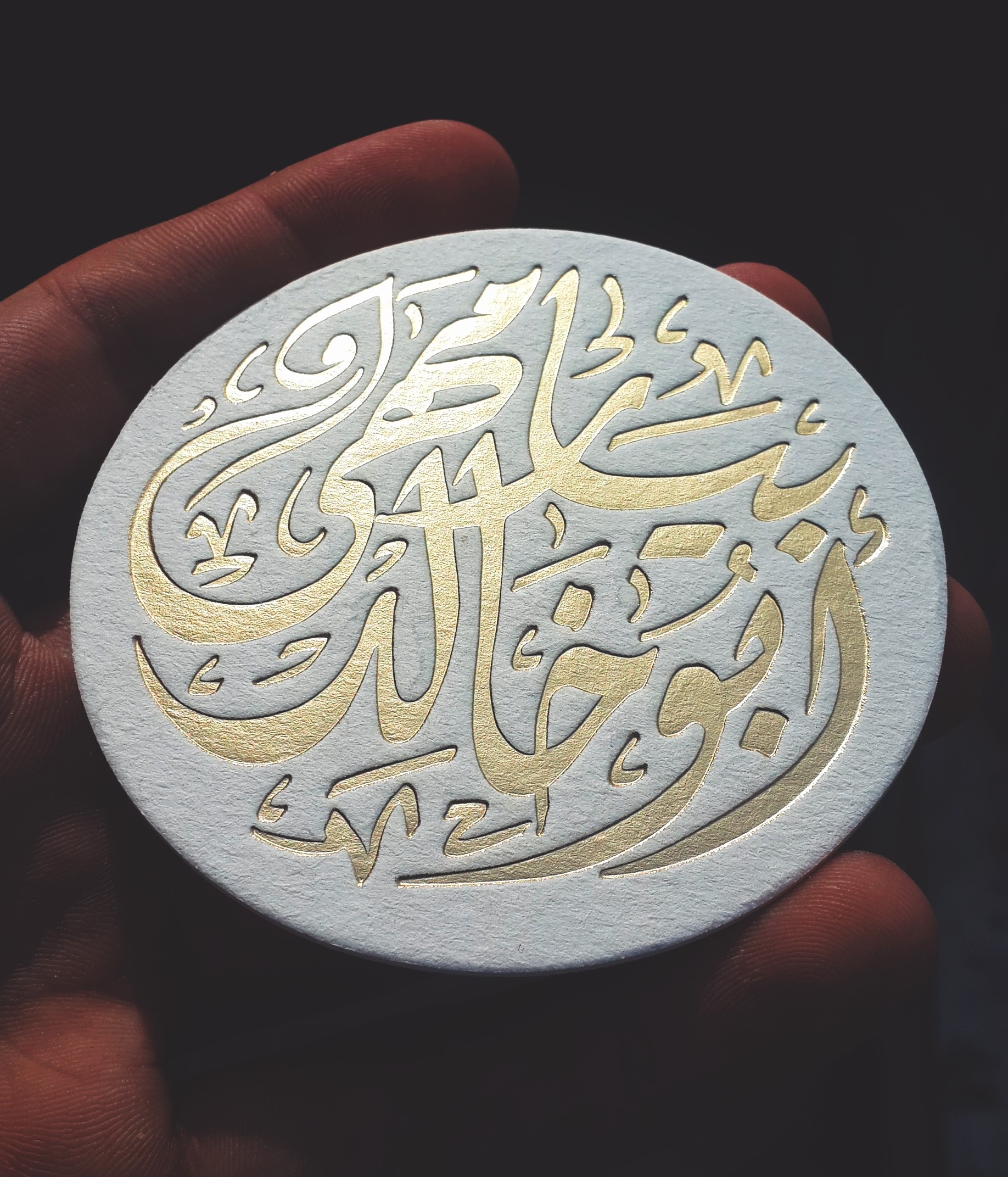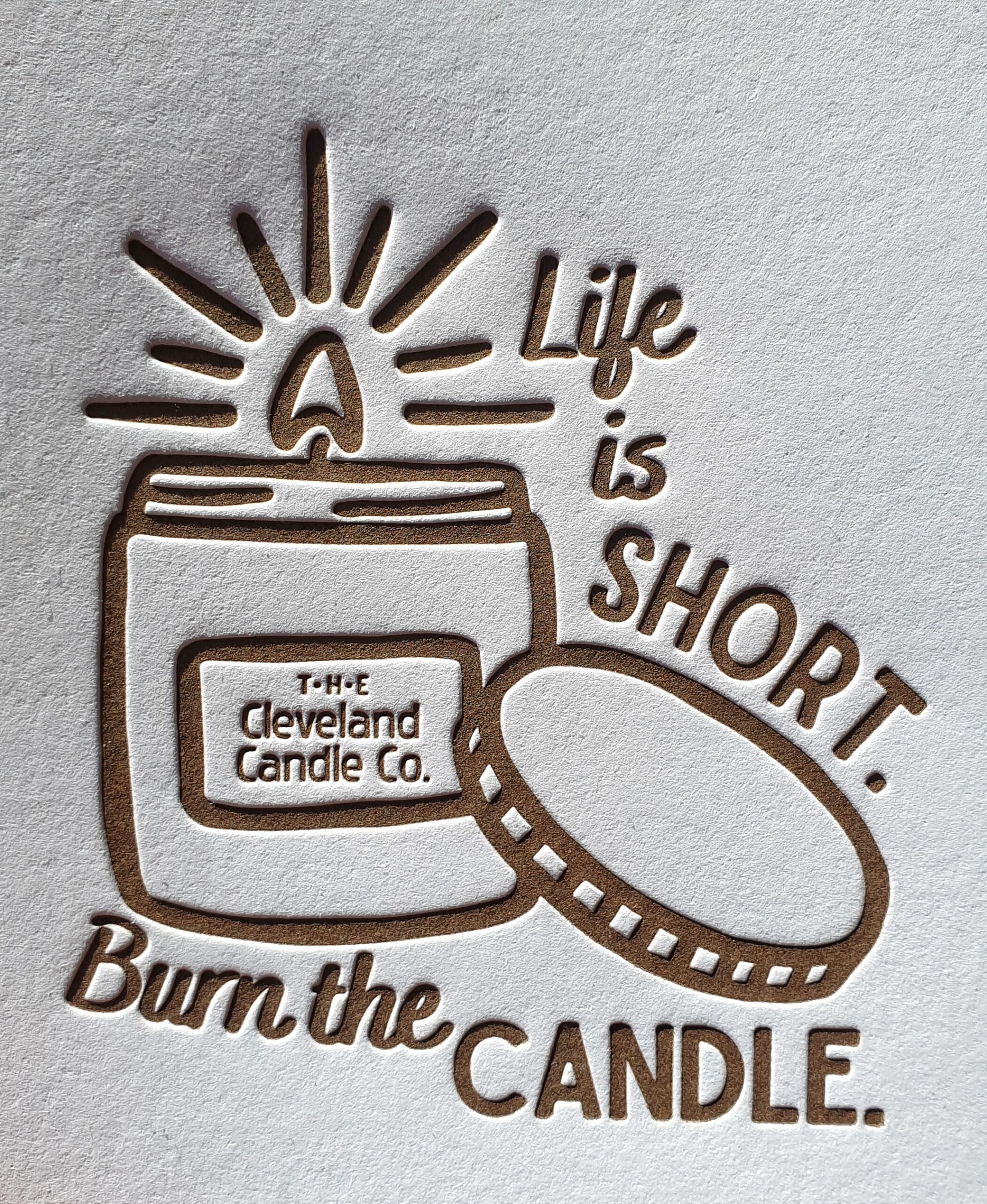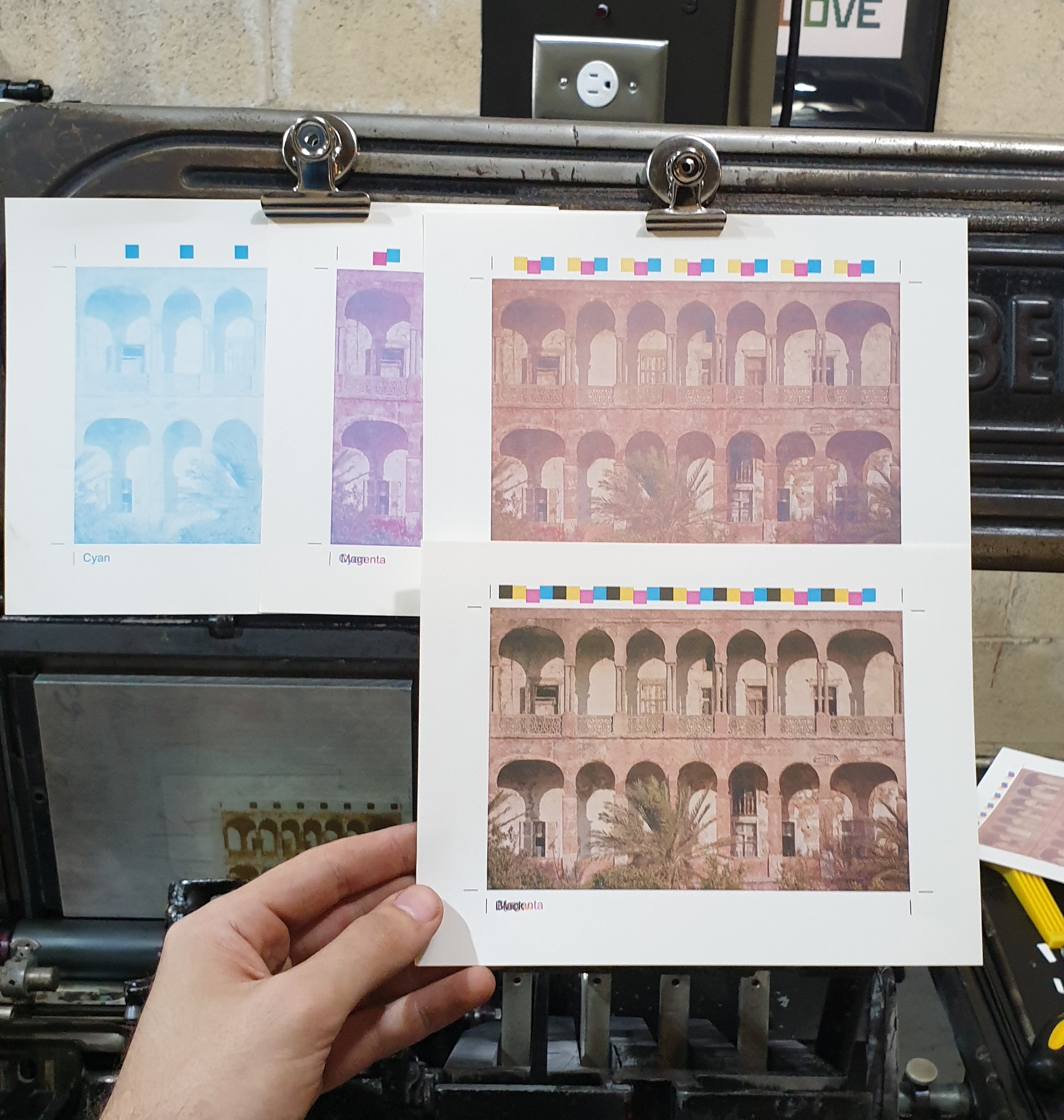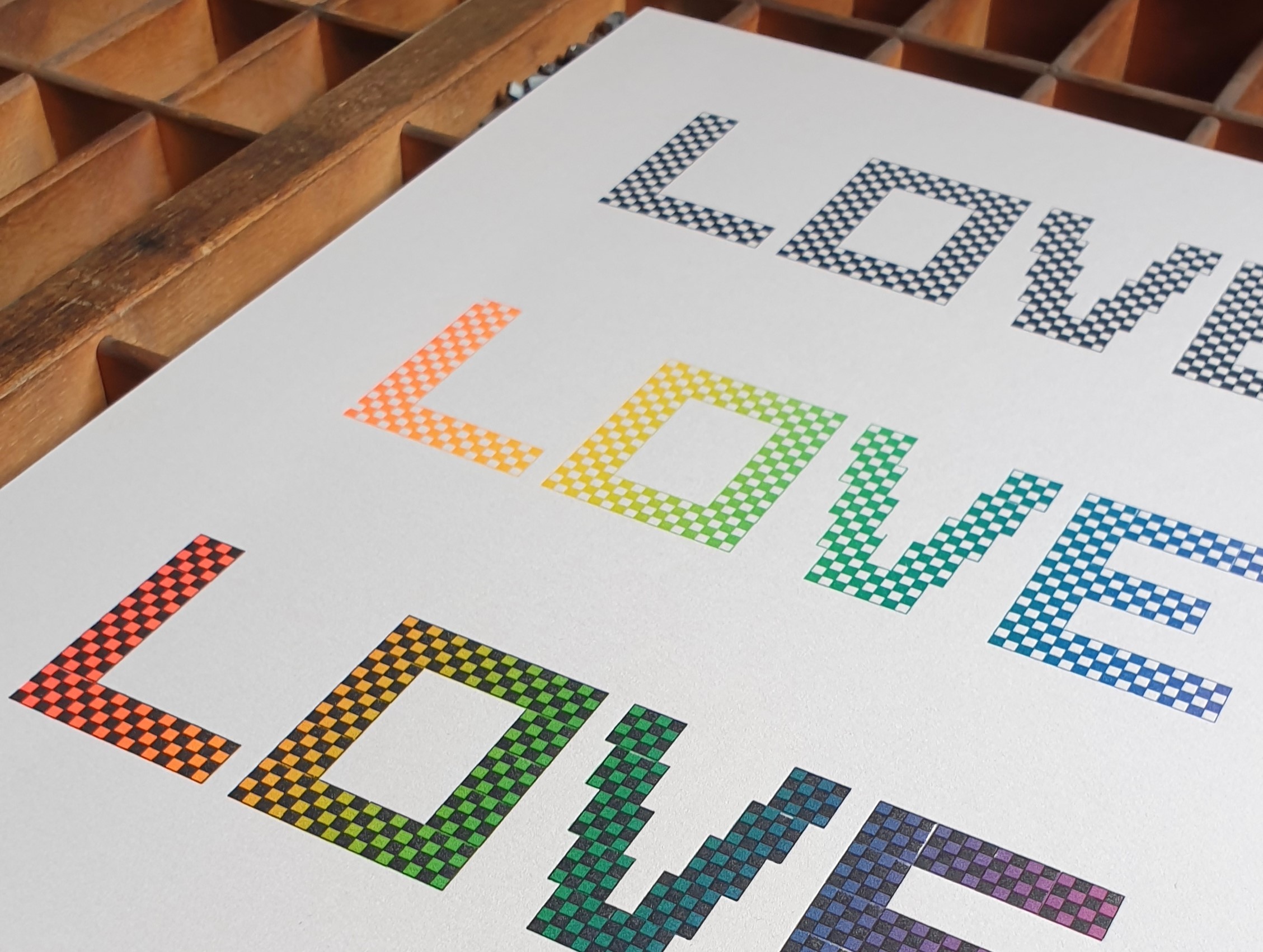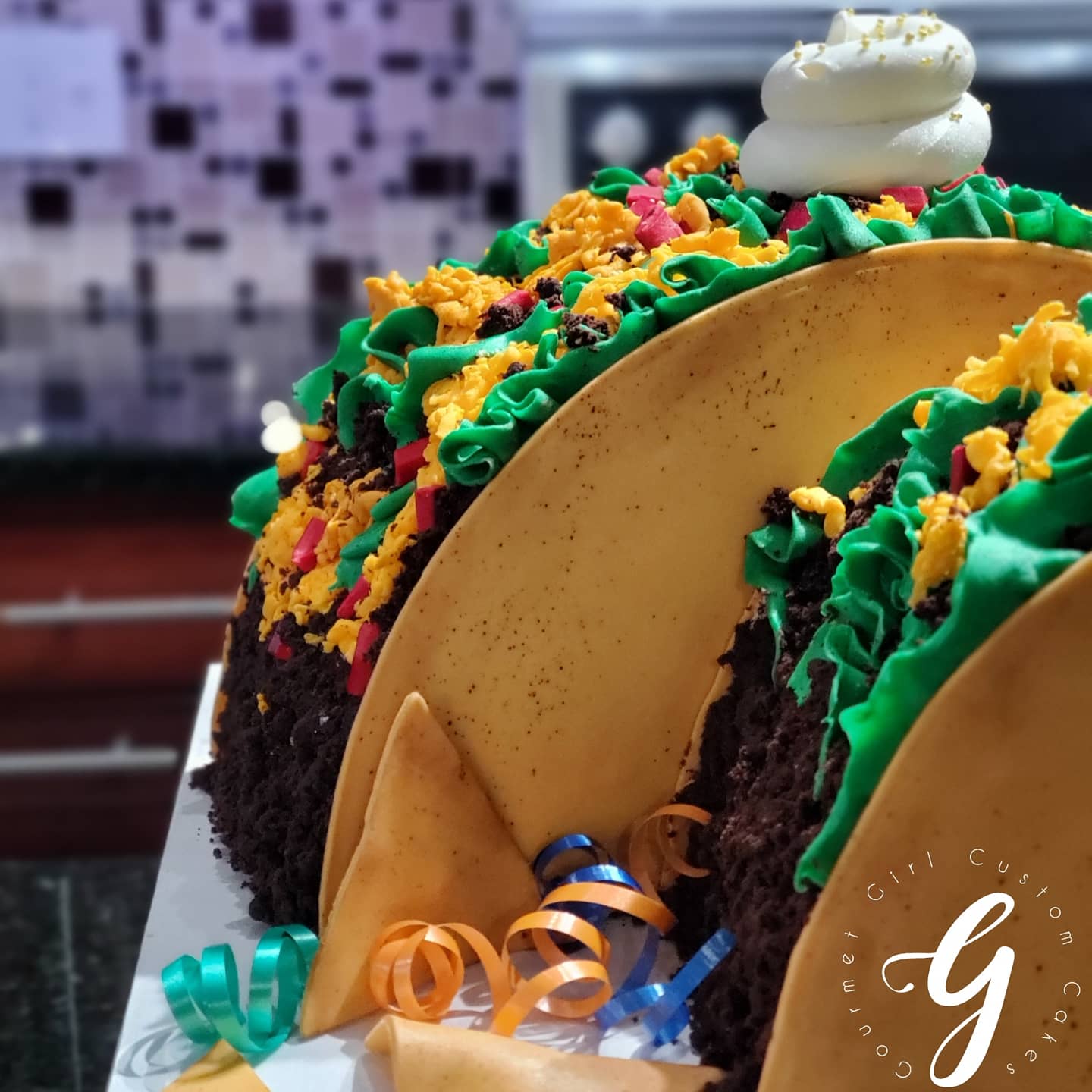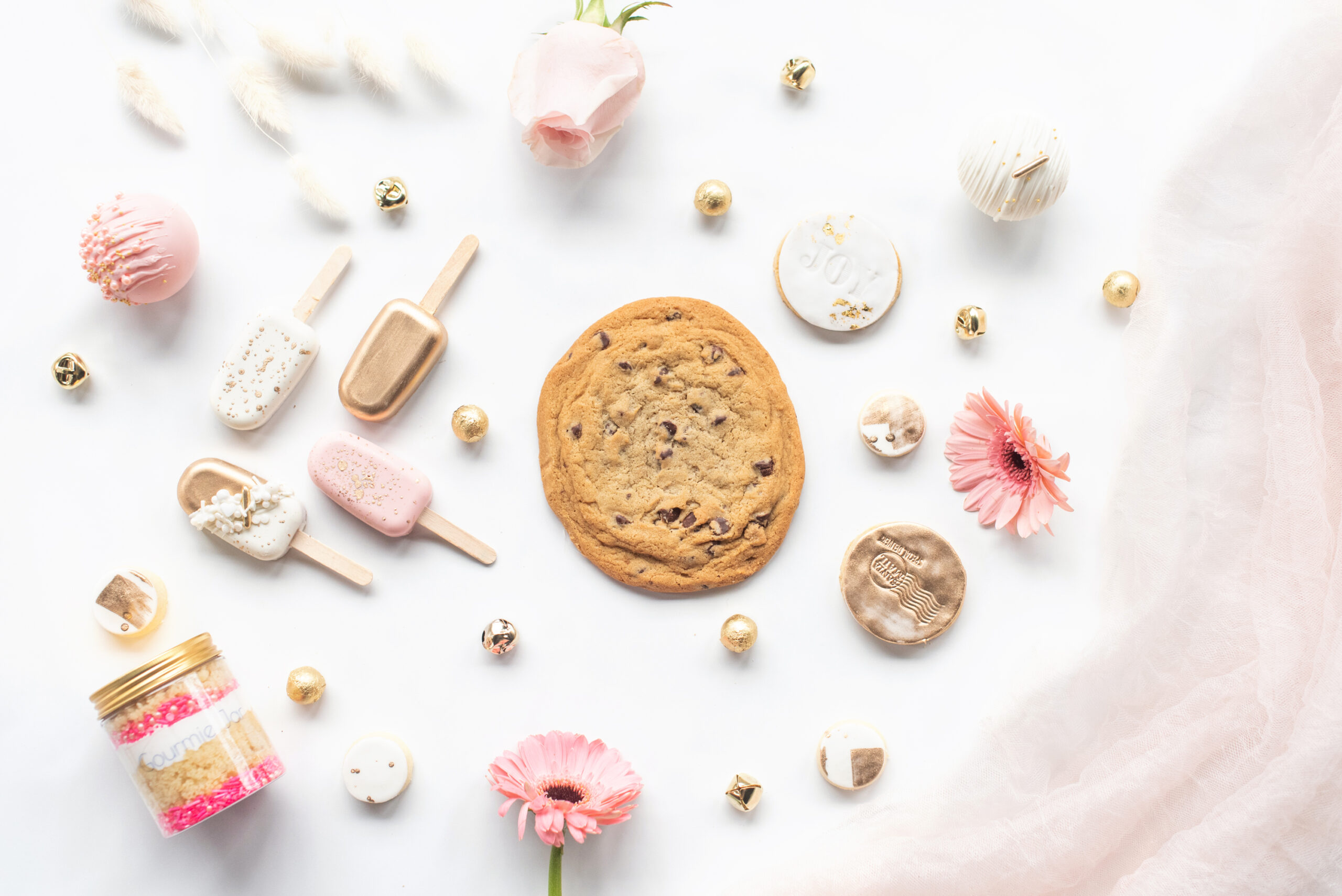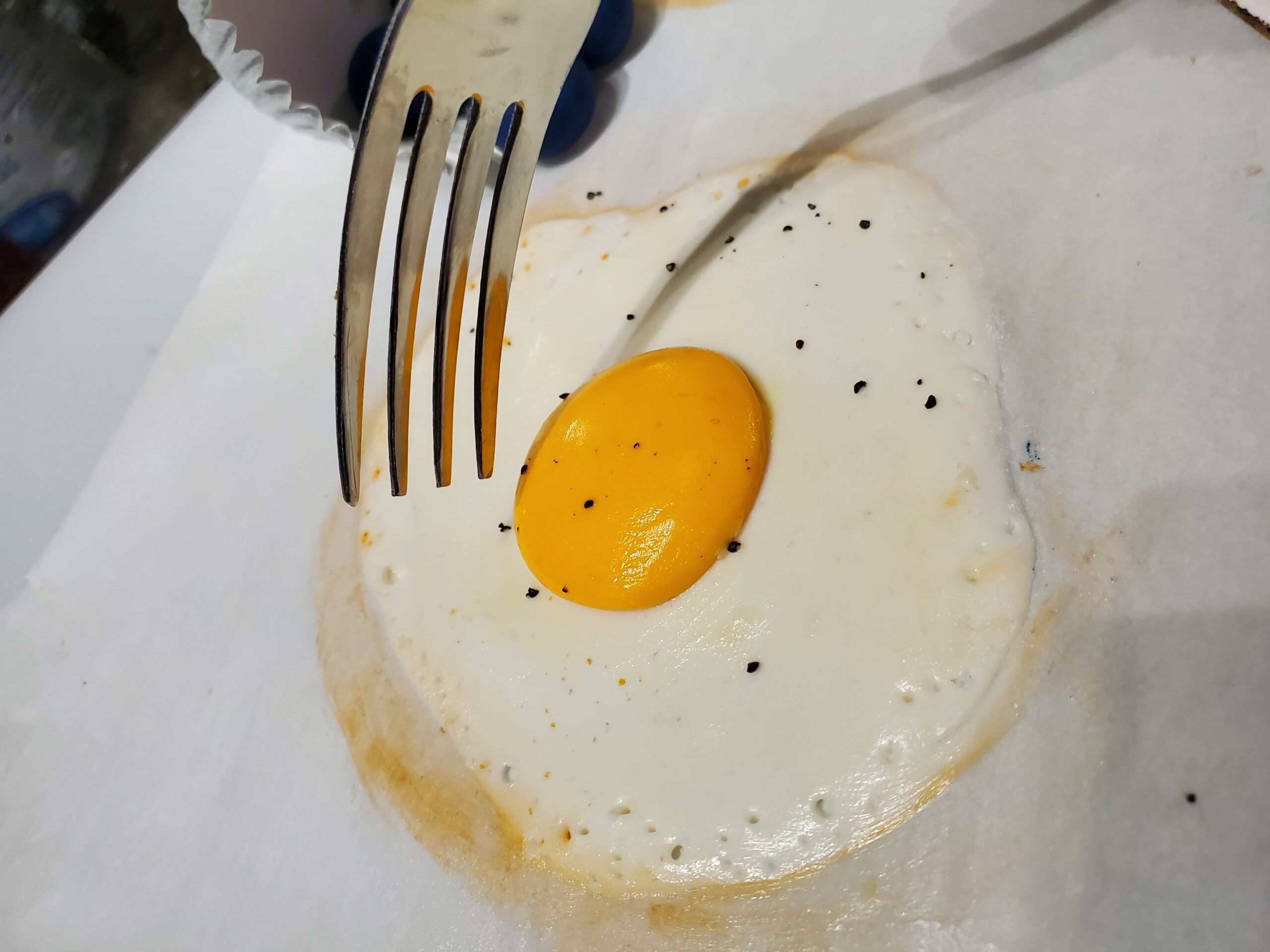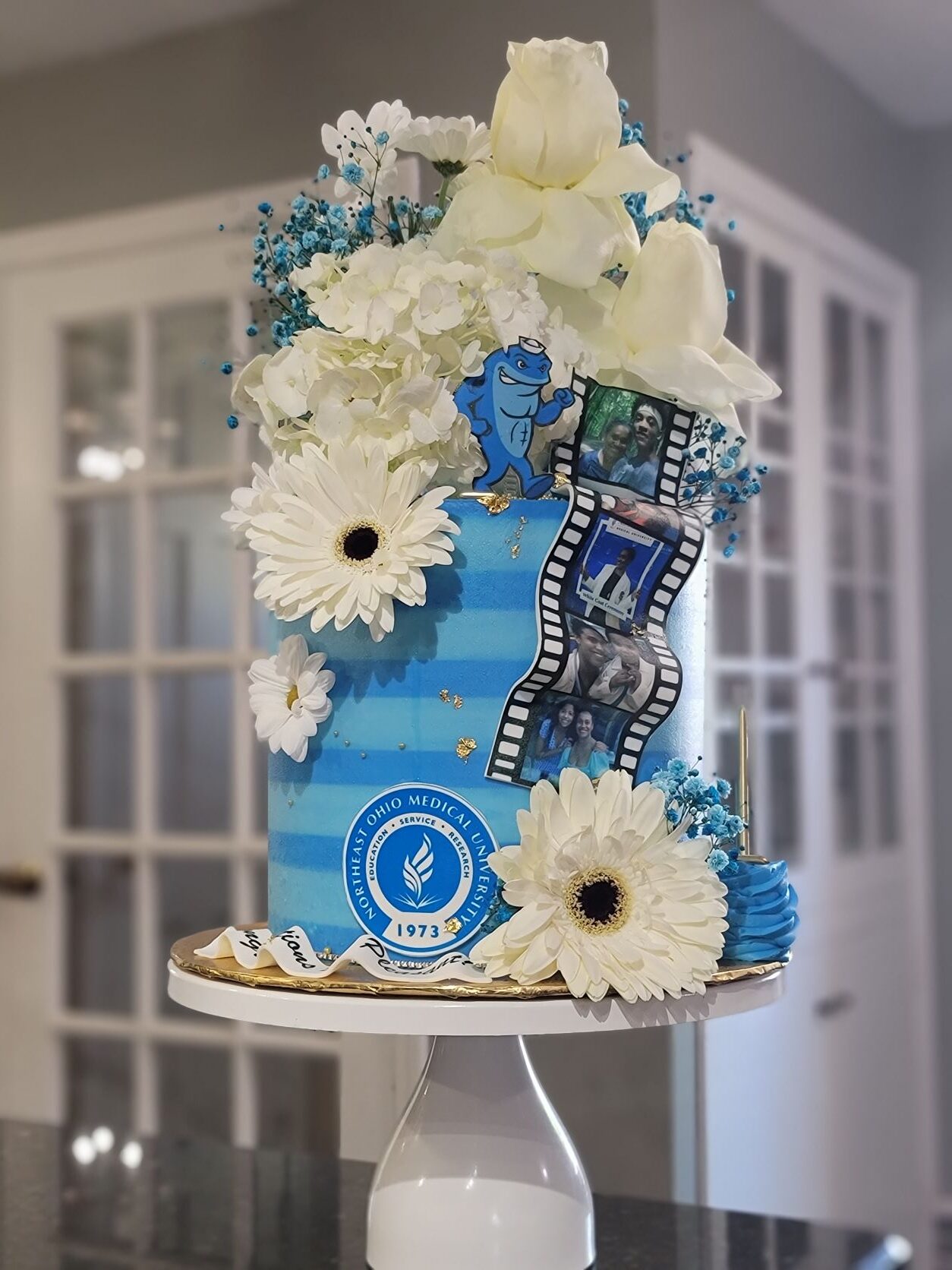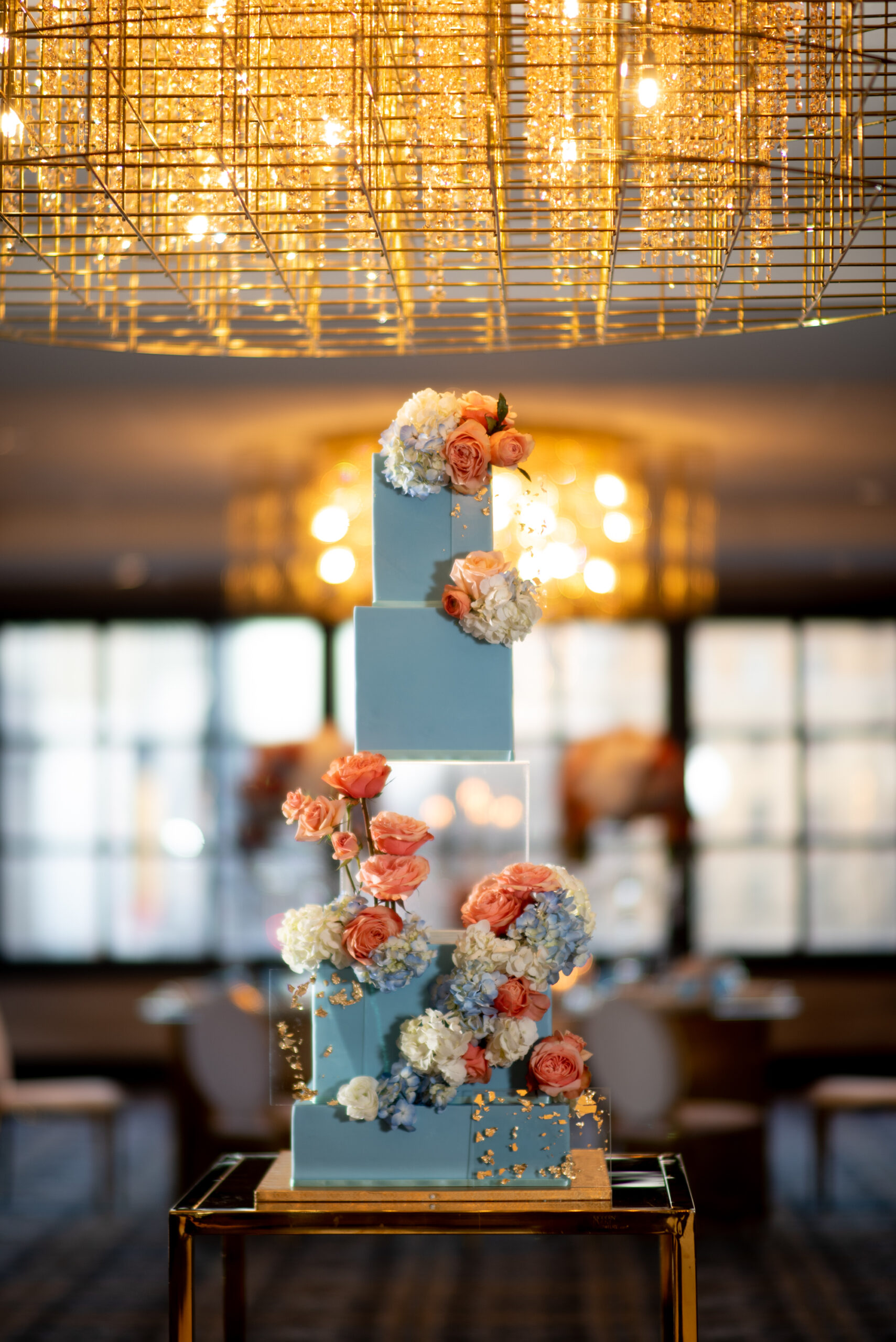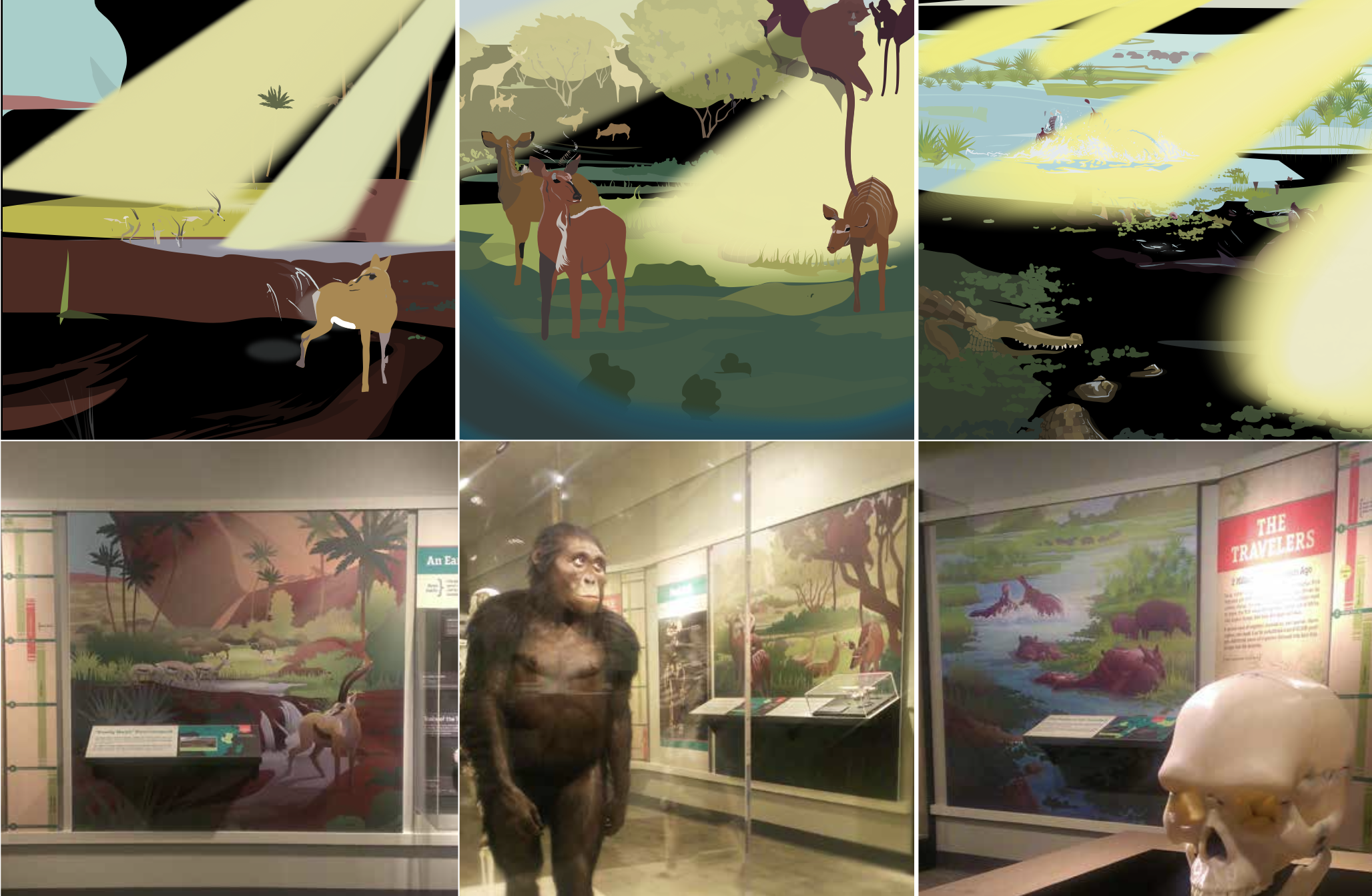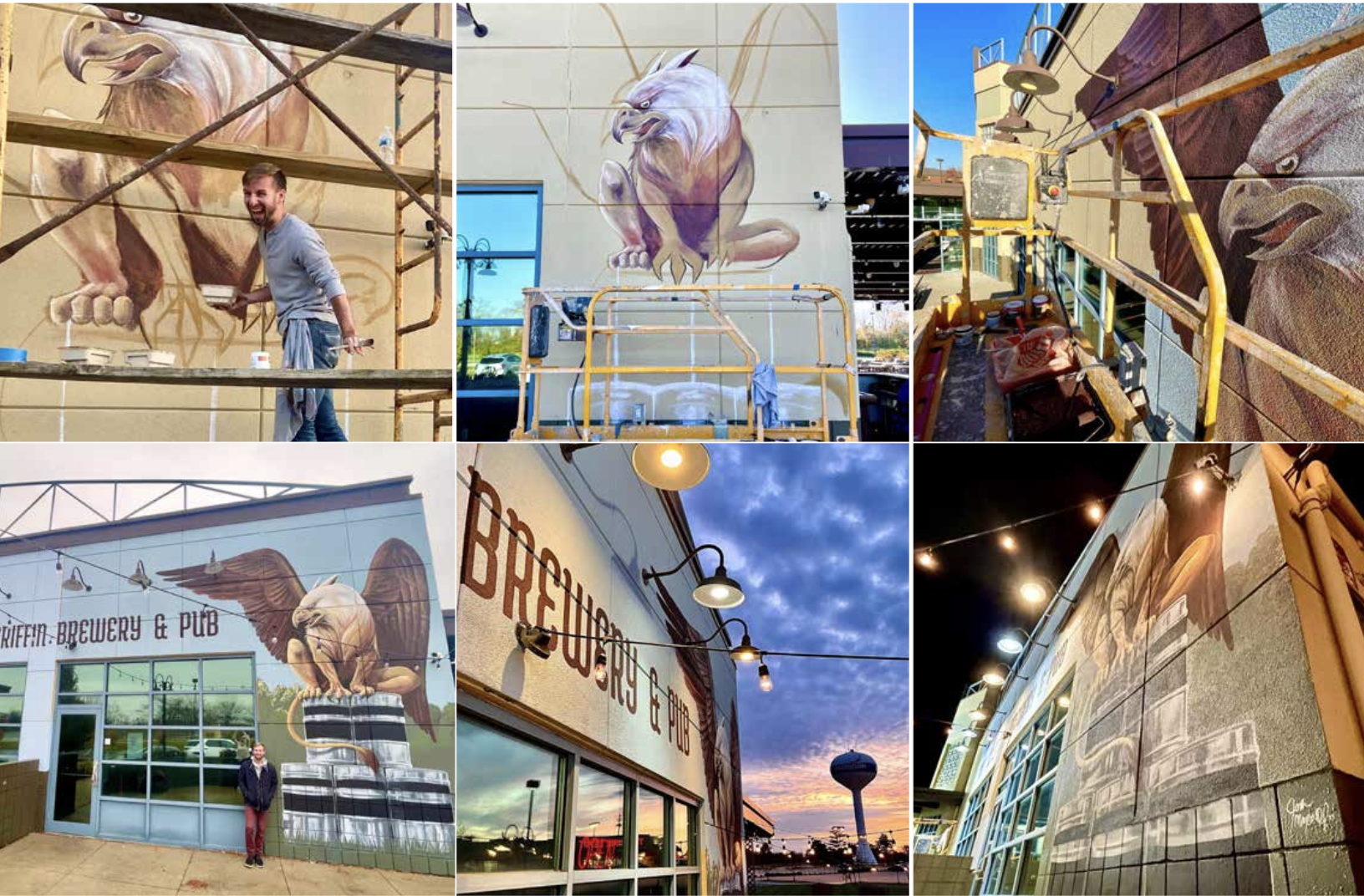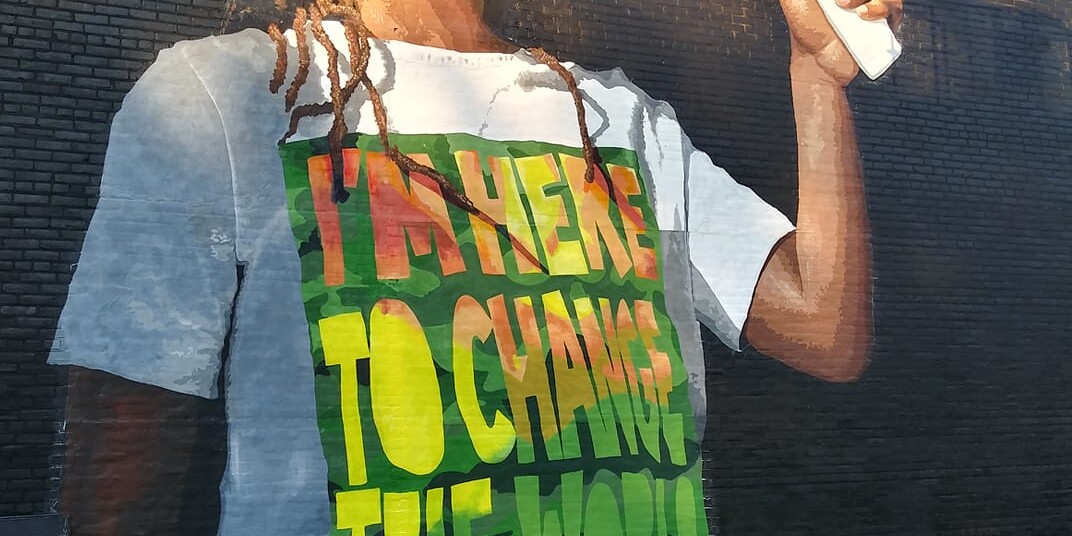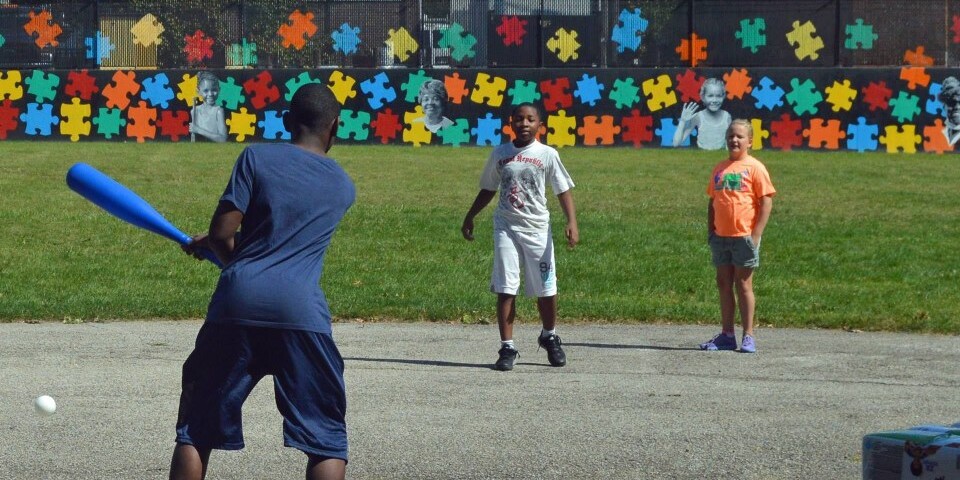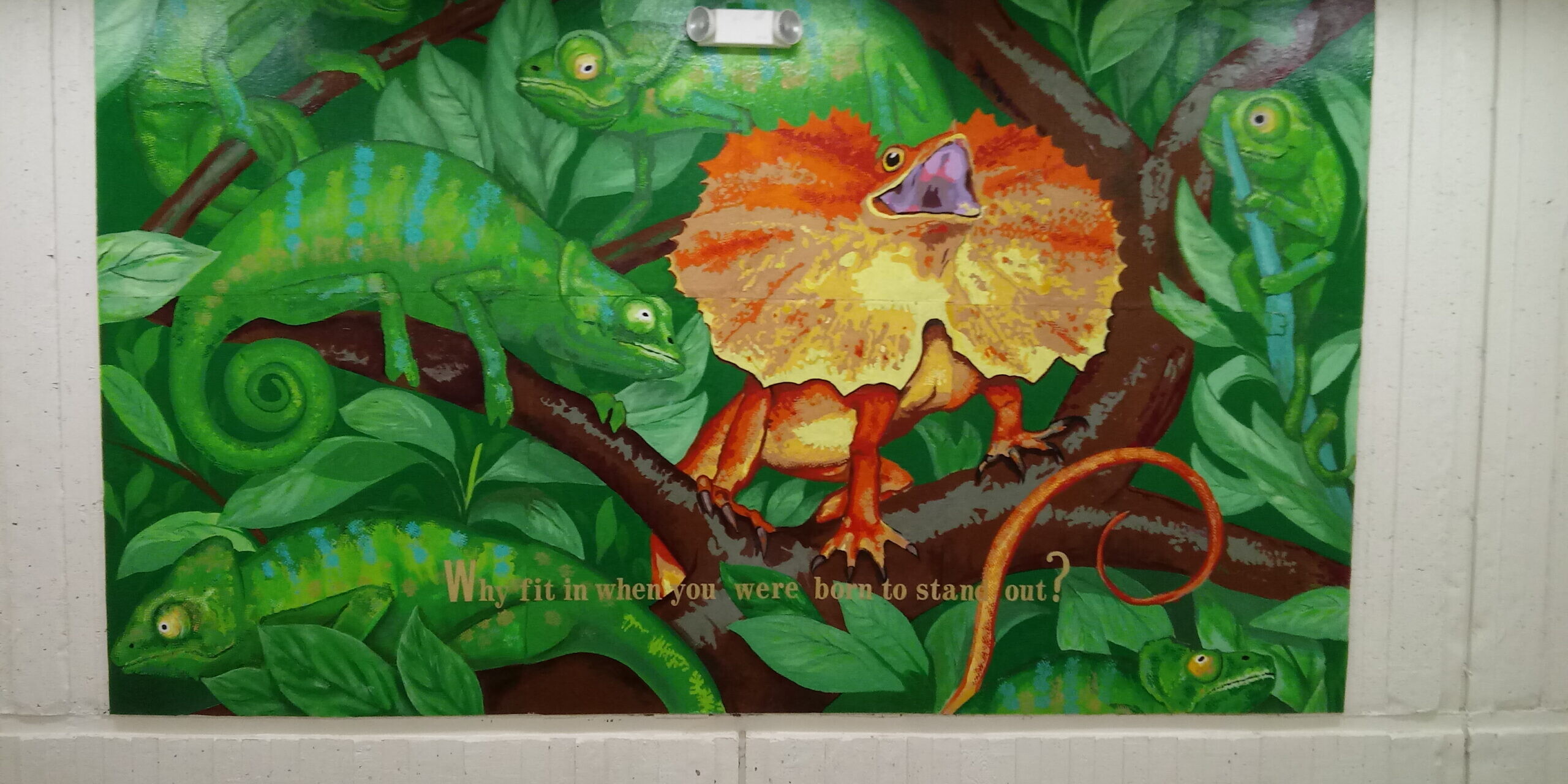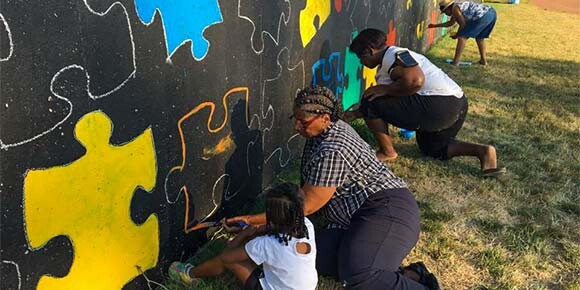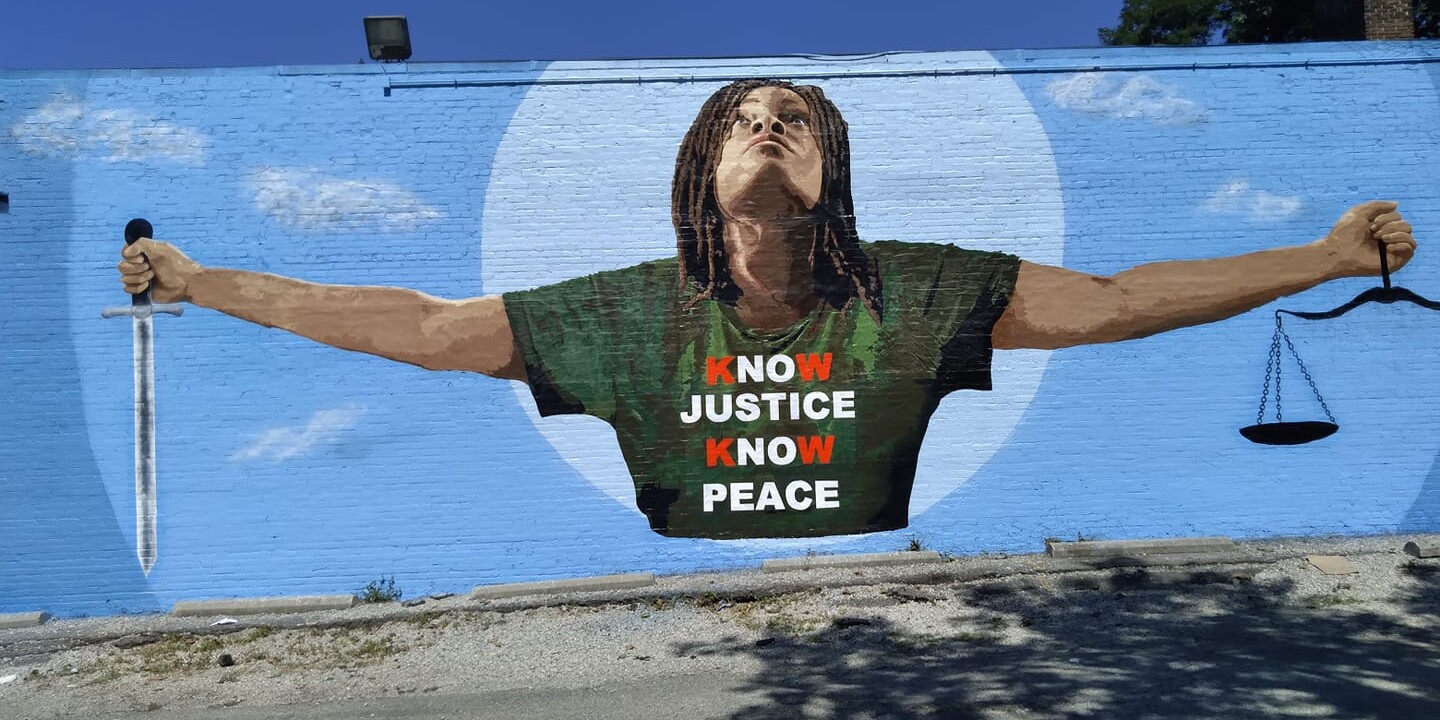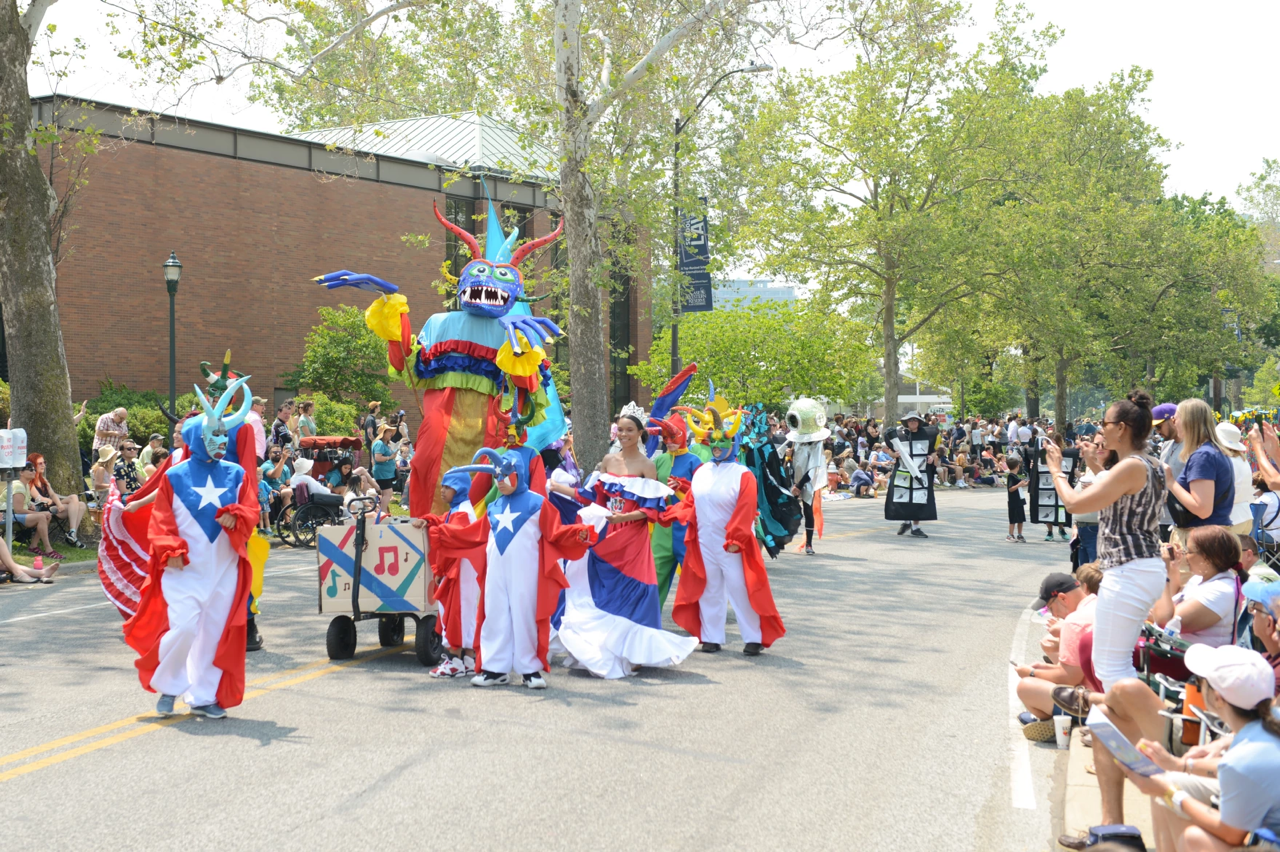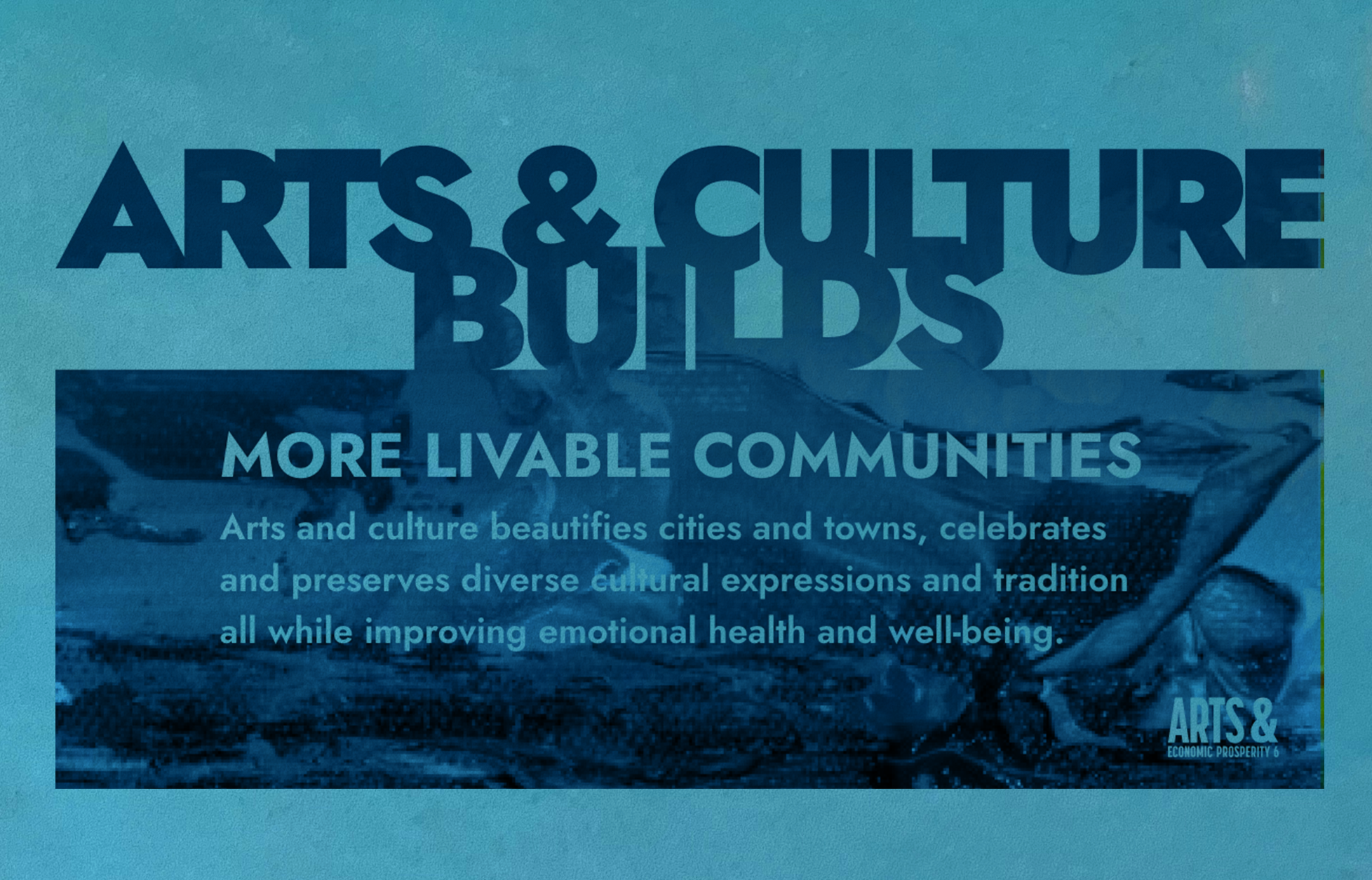Meet Alex and Lilly
Meet the team: Raíces Danzas de México

Creative Impact Fund Project: Raíces: Danzas de México
The dance workshop “Raíces: Danzas de México” will focus on preserving Mexican culture through dance. Although each of Mexico’s regions are represented with a variety of dance styles, we are going to focus on the prehispanic or indigenous dances. There is spirituality and symbolism that drives each movement of danza prehispánica. We want to teach the participants a deeper meaning as opposed to the stereotypes associated with Mexican culture.
The workshop sessions will take place Saturday mornings for 3 hours each for a duration of 6 weeks. Each session will consist of historical information on the instruments and culture, and the symbolism of each movement. We will then proceed with a warm up, dance session, and cool down. The music will be live as it is played on a Huehuetl drum. The languages utilized to communicate during the workshops are Spanish and English, depending on the audience members. Additional vocabulary will be taught in the indigenous language, Nahuatl. AlmaVision will provide the space for the workshops at Ingenuity. We hope to have up to 20 participants.
The workshops will be open to the public, ages 10 and older. We are hoping for a diverse group of participants. Participants will build cultural awareness and value and respect each other’s cultural perspectives and practices. We hope we can all come together to celebrate diversity. AlmaVision is prepared to commit to the “Raíces: Danzas de México” workshop. We are currently in the planning stages to implement this project. We have created a budget and we have set dates to begin advertising for the project. Lilly will impart the workshops and she will be assisted by AlmaVision team member, Alejandra Arteaga. Additional team members are also ready to assist where they are needed. Advertising for the workshop will begin during the summer months via social media and print.
Meet Shadi Ayoub
Meet Shadi Ayoub
Shadi Ayoub grew up in a print family in Beirut, Lebanon, where his family owned and operated a print shop. After his father passed away, Shadi took over the family business and expanded his technical skills in operating vintage printing presses. Realizing the need to share his knowledge and provide opportunities for others to experience print, Shadi started giving shop tours, hosting demos and workshops, and teaching letterpress at the American University of Beirut.
In 2019, Shadi moved to Cleveland and founded The 961 Collective, a letterpress printing studio and educational resource. He has been involved with local arts non-profits such as Zygote Press and Morgan Conservatory and has exhibited his work at various galleries and shows. Shadi has also been an active member of the arts community, serving on the board of Zygote Press and offering workshops and training at The 961 Collective, the Morgan Conservatory, and Zygote Press.
Through an artist residency and an apprenticeship with Master Papermaker Tom Balbo, Shadi has explored new techniques and pushed the boundaries of what can be achieved with letterpress printing. He is dedicated to elevating the craft and creating a collaborative space for artists to meet, print, and learn together.
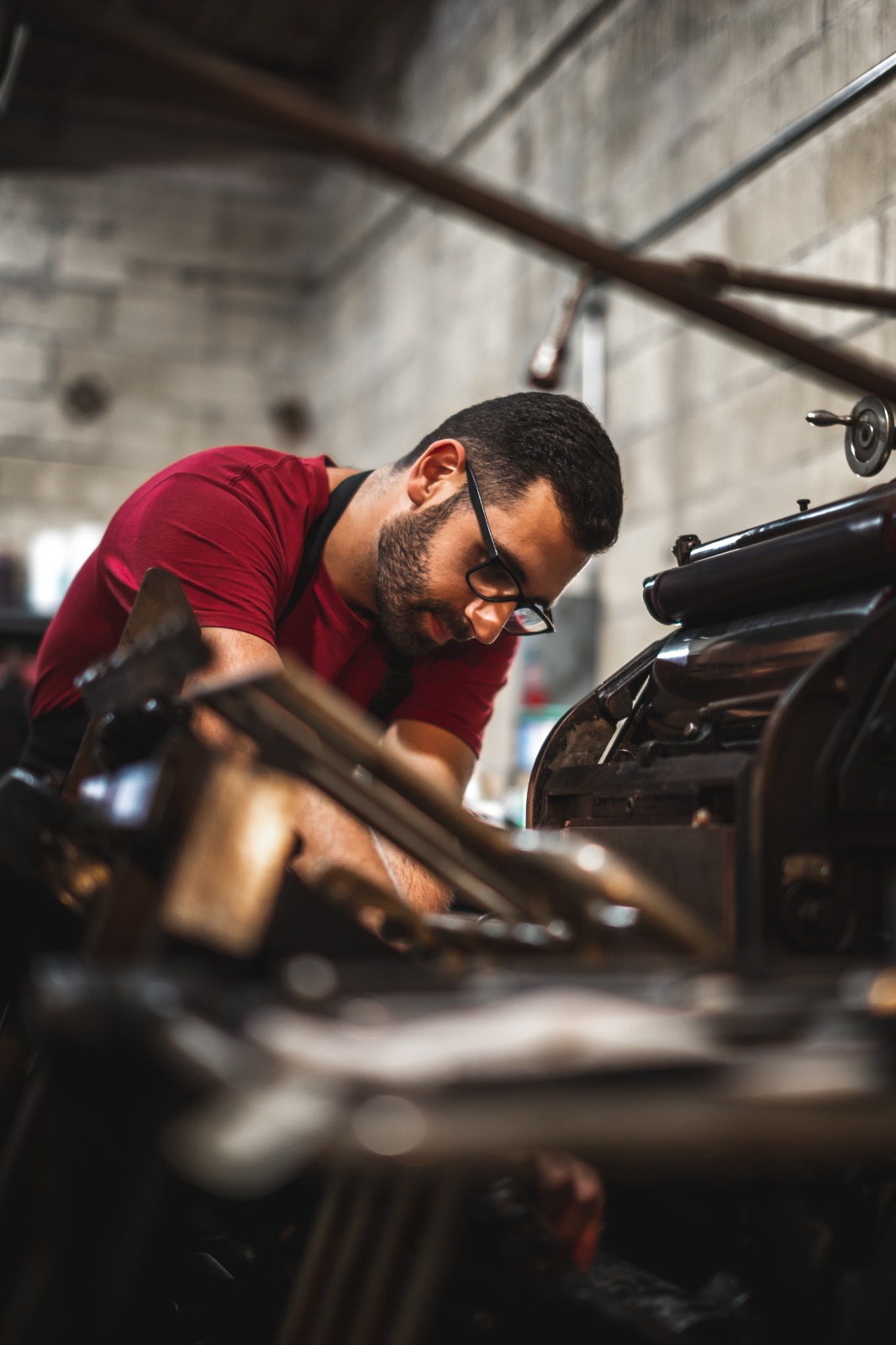
Creative Impact Fund Project: Let’s Print Together
After hosting several public demos and workshops internationally and in Cleveland, I saw hands on how amazed people were after the reveal of pressing their own print which was accompanied by a huge smile and often “can I make another one?”. It made me realize how important it is for members of the community to know that this was an important part of our history, it still exists, and they can actually do it themselves! Most had little to no experience with print and the possibilities it could provide as a medium which was the catalyst for applying to the creative impact project fund. ‘Let’s print together!’ will be a series of three public print demos open and free to everyone which will allow members of the community to come make their own prints, take away some free prints, and be part of Q&A sessions. The goal is for participants to have fun while also getting the opportunity to learn a traditional craft and how it can be used to their benefit. One sessions will take place at The 961 Collective, the letterpress studio housed inside the Ingenuity Cleveland building in the St. Claire Superior neighborhood. The remaining two sessions will be mobile offsite sessions in collaboration with other potential arts organizations from qualifying neighborhoods such as Zygote Press (Asiatown neighborhood) and Future Ink Graphics (Clark-Fulton neighborhood). By doing that we will have a greater reach impacting three different redlined communities allowing members of those neighborhoods to experience the power of print.
The 961 Collective facility has several machines for letterpress printing projects, the manual hand operated presses are safe and will be used by participants to make their own prints while the automated larger presses will be operated by myself as a demonstration tool of what is used for commercial large run productions. Participants will learn about the basics of ink mixing, the tools of the trade and how to operate the manual press to make their print which they will take home. Participants will also get to see printed samples of previous projects some of which are commercial applications for clients while others are limited edition art pieces to show them the versatility and range within the print medium. The two offsite mobile sessions will be possible through the use of a small portable Kelsey 5×8 press which has been an invaluable tool at demos to allow people to experience print without the need for a large heavy press.
These sessions will be in collaboration with other organizations and hopefully yield larger crowds due to combined marketing efforts for a greater impact within the community. There will be 1-3 local artists/volunteers at each event who will help answer any questions participants might have and guide them into making their prints. There will be some refreshments during these sessions and hope to be able to secure sponsorship for snacks and/or meals. Through training, trial and error, workshops and collaborations internationally, I have come to realize the need and importance of knowledge sharing when it comes to traditional printing. Information on these traditional techniques isn’t easily available and it is essential to keep passing them on and creating interest around them. Shop classes at schools are no longer being offered and kids are often missing out on hands-on educational experiences. That said, these sessions will also be a great opportunity for all age groups which will be a fun way for people to meet, mingle and learn about each other as well.
Meet Adenike Harper
Meet Adenike Harper
Adenike Harper, also known as the “Gourmet Girl”, serves as the cake artist and owner of Gourmet Girl Custom Cakes. Self-taught with 19 years’ experience, she tells stories with sugar! With cake as her canvas and you as her muse, Gourmet Girl specializes in curating art gallery worthy cakes and desserts that reflect what makes you unique through couture cake design. Gourmet Girl Custom Cakes offers her customers or ‘Gourmies’ a one-of-a-kind, intimate creation process of their ‘cake story’ highlighting all that they love and what makes them special for the sweetest memories. Gourmet Girl considers herself a legacy baker. Her mother and grandmother were expert bakers and she comes from a long line of artisan of various disciplines. While her personal cake story is less about an actual cake design, and more about how she became Gourmet Girl when her path totally diverted from biology to baking. Gourmet Girl was born after Adenike decided to change career paths, very much unpredicted and unplanned. She graduated Summa Cum Laude with a Bachelor of Science in Biology, with all intentions to go to medical school. But after the passing of her mother, she began baking to divert her mind from her grief and to revive memories of her mother teaching her how to bake growing up. Baking calmed her, it allowed her a way to channel energy into the production of something positive, visually pleasing, and delicious.
Through baking to cope and along with God and therapy, Adenike made it through a very difficult time in life and was able to thrive from the joy that baking and cake decorating brought. Partnering with a licensed therapist, Gourmet Girl Custom Cakes wishes to create a mentoring program for youth in Cleveland that is rooted in mental health and wellness; teaches the art of baking and the visual art of cake design; supports and encourages; and celebrates legacy and heritage in the kitchen and in life. With Adenike’s love for teaching and 7 years of teaching experience this mentoring arts program will curate a program that helps youth to thrive in and out of the kitchen. Adenike’s most recent accolade was having won Impact cohort 16 of Jumpstart, Inc. in December 2022.
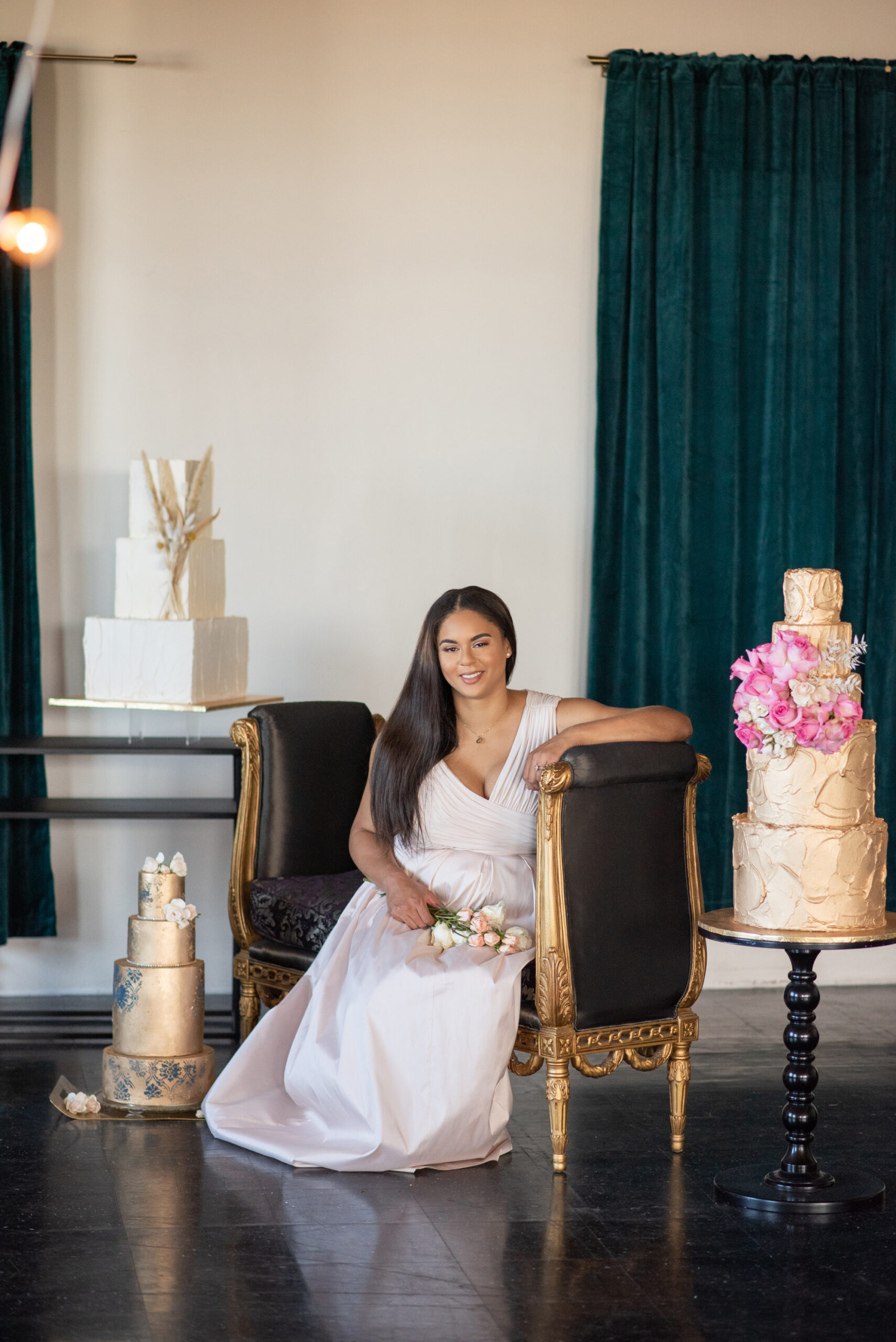
Creative Impact Fund Project: Peace of Cake
Partnering with a licensed therapist, Gourmet Girl Custom Cakes has created a mentoring program for youth in Cleveland that is rooted in mental health and wellness; teaches the art of baking and the visual art of cake design; supports and encourages; and celebrates legacy and heritage in the kitchen and in life. With Adenike’s love for teaching and 7 years of instructional experience “A Peace of Cake” will help participants thrive in and out of the kitchen. A “Peace of Cake” has the goal of providing in-school youth (12-17 year olds) with an experience that utilizes baking and cake decorating as a positive (emotional) outlet while learning core concepts from STEAM, nutrition and culinary science/art, entrepreneurialism, and food history and culture. This program will connect youth to caring adults in small group developmental relationships to reduce stress, foster self-expression, and resiliency. Encouraging positive mindset/mindfulness while cultivating confidence. Program activities will include 6 to 8 small group baking sessions that allow for individual and group project completion and the opportunity to experience success via project completion resulting in a good produced. Participants will be instructed in the fundamental elements of baking through the creation of a range of diverse desserts, while engaging in meaningful group discussion that aids in the creation of a safe and supportive environment that is free from pressure.
Meet Josh Maxwell
Meet Josh Maxwell
Josh Maxwell is an accomplished scientific and biophilic artist exploring the intersections of art, science, sustainability, and the harmony between humanity and the natural world. With a keen sense of how built environments affect the mind, body and spirit, Josh explores the methods and modes of reconnecting our selves and our souls back to the natural world through striking and impactful visual displays challenging one’s sense of place, space, scale, and the perceived notion that humanity is separate from nature. Josh’s work is focused on exploring the intersection of art, science, and sustainability, with a particular emphasis on the harmony between humans and the natural world. Through his innovative mixed-use of mediums such as traditional oil and acrylic paintings, wood and stone sculpture, exhibit design, large scale murals, and landscape architecture, Josh creates moments of intimate observation and whimsy curiosity that inspire pause and reflection. Josh’s work promotes a more discerning emotional awareness of our well-being and that of the ecological world in which we impact. By challenging our perception of place, space, and scale, he creates a powerful connection between art and nature, inspiring viewers to become more deeply connected with the world around them. Josh has collaborated with some of the most notable institutions and communities in the field of natural sciences, including Cleveland Botanical Gardens, Cleveland Museum of Natural History, Cleveland Metroparks Zoo, Cleveland Metroparks, Sustainable Cleveland, Kelley’s Island State Park, The Woods Hole Oceanographic Institute, and Edible Cleveland Magazine. His leading-edge artwork informs, educates, and engages audiences, helping to reconnect people with the natural world.

Creative Impact Fund Project: Rooted
The creative vision for the project is to produce an oversized series of flora and fauna of the hyperlocal neighborhood, and that of the deep connection Slavic Village holds for the Czech and Polish communities. The specimens would include plants that residents would assist in identifying as core to their heritage for things like cooking, holidays, and the presence of the natural world found in Poland. The Polish affinity for herbs has a long history, but it is also very much in tune with the modern ideas of healthy, natural living. Herbs are the oldest treatment out there, and folk medicine has made use of them all around the world since time immemorial. In Poland, traditional remedies have always been connected to the plentiful fields and forests. Possible specimens to illustrate would include: Dill (koperek) – its’ aromatic flavor complements many Polish dishes. Can be used as a garnish for soups and salads, great for dill pickles and often used “mizeria” (cucumber/sour cream/yoghurt salad) Paprika (papryka) – an essential ingredient in goulash, paprika is also popular in Polish recipes, giving a red color and aromatic flavor to many meat dishes Bay leaves (liście laurowe) – frequently used in soups, stews and meat dishes, bay leaves are essential herbs for Polish cuisine. Caraway (kminek) – these aromatic little black seeds may be most often encountered in rye bread, where they give the characteristic flavor that goes so well with corned beef. But caraway is also used in many other dishes, from sauerkraut to sausage. They are an essential ingredient in caraway soup. Poppy seeds (mak) – these seeds are most often found sprinkled on bread rolls, but they also are an essential ingredient in the well known Polish dessert dish called makowiec (poppy seed cake) and kutia (Christmas pasta dish) These flora illustrations would be painted across a brick wall in massive magnification. At the bottom of the mural would be an undulating border of landscaped herbs and spices found in the mural and beyond, with interpretive signs that indicate the plant type, potential uses, and the cultural context to the neighborhood and its residents.
Contact Josh: jamaxwelldesigns@gmail.com
Block Party: Saturday, May 20th, 2023 from 1pm to 5pm.
Meet Stephanie Lassiter
Meet Stephanie Wahome-Lassiter
After graduating from Miami University Stephanie lead AmeriCorps teams while working for City Year Detroit and City Year Seattle/King County. Upon graduating with her Executive Masters in Nonprofit Leadership from Seattle University she became one of the founding staffers of E.L. Haynes Elementary School in Washington D.C., while earning a Masters in Teaching from American University. Stephanie elevated her work with youth onto a national platform as the National Director of Education for Scenarios USA, a NYC based nonprofit, in which she implemented the national education program and Cleveland regional programs for nine years. Stephanie’s education and film based programming supported, engaged, and inspired youth to realize their full potential through the power of education, media, and storytelling. Over 15,000 Cleveland youth were served 1,100 educators trained in 5 curricula, 10 winning stories written by youth were made into films and screened at film festivals, schools and The Showtime Channel. When the national organization ceased all operations in 2017 Clevelanders requested to continue to address the need. A funders group was formed and Stephanie is now the Executive Director for Art of Me in which she is expanding the work by deepening the impact in Cleveland. As the executive producer of Art of Me she produced 2 feature and 5 short films in Cleveland and NYC. Stephanie is also the co-founder of All About Your Health. A 100% volunteer-based organization that has connected over 11,000 youth, families, and volunteers to over 200 programs, services, and organizations in Northeast, Ohio since 2011.

Creative Impact Fund Project: The Girl
The creative vision for the project is to highlight the beauty, intelligence and priceless nature of black girls and their moms. Stephanie will do this by creating a film piece of a girl searching for her beauty but realizing it has been right in front of her all along. I will conduct interviews with girls in the community about what beauty means to them and how they would like to see themselves portrayed. After creating a script, we will have a casting call for the community members to be a part of the production. My audience is middle and high school aged girls. I will plan for middle and high school aged girls and their moms to participate in the film piece. I would like for this experience to encourage them to create their own sister and community circles of black women supporting each other through a facebook group, attending each others events and supporting their businesses. I would like for this project to bring women and their daughters together to celebrate our beauty and diversity as black women. This project is important to me because black girls aren’t always highlighted as being beautiful as their authentic selves. There is so much self hate and mother and daughter hate that it is affecting so many of us. I hope this project brings together fun, joy and we see the need to support each other.
Meet Robin Robinson
Meet Robin Robinson:
Robin Robinson is the Executive Director of Sankofa Fine Art Plus. She is a painter, sculptor, photographer, and educator who facilitate art therapy related programs for youth and senior citizens in the Glenville community. Robin Robinson has a BFA from Temple University and Tyler School of Art. She is a certified art therapist and community activist. Her personal artworks have received numerous accolades and awards. Robin seeks to educate and expose the community to African American and ethnic art which give the community a visual representation of their own voices through transformative, inspirational, monumental murals that they help create, giving them pride of place and ownership. Robin insists that all public art starts with community engaged conversation to establish mutual trust and understanding. In 2015, Robin convinced of the healing power of art created the “Urban Renaissance with heART” program for Sankofa Fine Art Plus. Robin translates the unheard voices of the underrepresented neighborhood residents through community engagement onto the walls of public spaces. Robin as Executive Director of Sankofa Fine Art Plus is dedicated to bringing fine art outside of the traditional/restrictive art venues into the urban community in the form of co-creative, collaborative, public art projects and experiences. “As a Black artist it is my responsibility to translate the otherwise ignored voices of my community into artworks that are engaging aesthetically while being intrinsically thought provoking and socially relevant.”
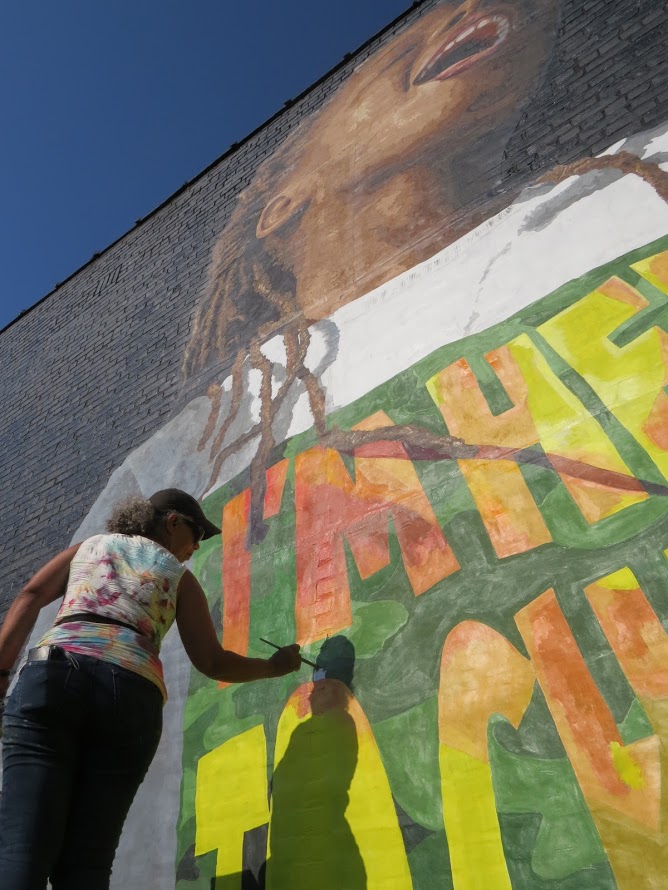
Creative Impact Fund Project: Recapture The Spirit of Our Community Park
In 2020, the City of Cleveland rezoned Glenville Ward 9 into two distinct areas, creating a sub-district known as Forests Hill that connected it to Ward 10. As a resident of the community, Robin Robinson noticed the need to establish new relationships with City Councilman Anthony Hairston due to the rezoning, as previous connections had been with Councilman Kevin Conwell.
During this time, the residents of Forests Hill faced difficulties caused by the demolition of an elementary school and the YMCA Community Center. These demolitions resulted in the creation of Glenview Park, which had become an important space for community gatherings and youth activities. However, the park was considered outdated and underutilized by the city’s planning department and architects.
In 2021, Forests Hill residents received notifications through newsletters and mailings that their park would undergo renovations. The existing playground, basketball courts, and pool were scheduled for demolition and intended to be used by the Northeast Ohio Regional Sewer District (NEORSD). The plans for the renovated Glenview Park included a state-of-the-art playground, basketball court, and baseball diamond for the community.
However, when the residents eagerly anticipated the completion of the park, they found themselves confronted with the construction of the NEORSD tunnel project. This project involved the installation of an enormous institutional gray vinyl covered barrier around the entire area, which was foreboding and intrusive. The structure became an eyesore to the residents, evoking images of a prison or concentration camp.
As an advocate and engagement specialist in the Glenville/Forests Hill community, Robin Robinson has been an active participant in community development for over a decade. Recognized for their public art and murals, Robin understands the psychological impact of the intrusive wall on the community. Consequently, they desire to transform the gray tarp surrounding the facility into a vibrant community mural that recaptures a sense of ownership and self-reliance, reminiscent of the pride the community once held for Glenview Park.
In an effort to raise awareness and peacefully protest the presence of the gray vinyl covered barrier, Robin plans to organize three “Paint Party in the Park” sessions over the course of weekends. Their intention is to invite members of the community to participate in painting large canvas drop cloths that will be hung over the existing tarps on the fences. By replacing the drab scenery with a colorful and vibrant environment, the hope is to turn the region into a lively space once again. Robin intends to hire two resident artists from the Glenville area for each workshop and will ensure that all necessary supplies, snacks, and music are provided for the participants.
Arts and culture generate more than $500 million for Cuyahoga County economy, new study shows
Source: Signal Cleveland
Date: October 12, 2023
Abstract:
Cuyahoga County’s nonprofit arts and culture industry generated more than $533 million in economic activity in 2022, according to a comprehensive study released Thursday.
This was the first time Cuyahoga was included as part of a national economic impact study conducted by Americans for the Arts. Every five years, the Washington, D.C.-based nonprofit focused on building “recognition and support” for the arts looks at the economic impact arts and culture have on communities throughout the United States.
Study touts $500M arts impact in Cuyahoga County last year
Abstract:
A study by Americans for the Arts finds that Cuyahoga County arts nonprofits and their patrons contributed $533 million to the economy in 2022.
The survey results were released Thursday, showing polling from 34 percent of the county’s arts and culture organizations. The study has been conducted six times since 1994, but this is the first time Cuyahoga County has been included among the 373 regions reviewed. Arts advocacy group Assembly for the Arts coordinated the effort locally. Assembly CEO Jeremy Johnson said it shows a sector that’s been resilient after the COVID-19 pandemic.
Groundbreaking Study Reveals Economic and Social Impact of $533-Million Nonprofit Arts and Culture Sector in Cuyahoga County
Arts & Economic Prosperity 6 Study Centers Equity in Economic Research and Highlights Vital Role of Arts and Culture in Building More Livable Communities
CLEVELAND, Oct. 12, 2023 — Assembly for the Arts today announced that Cuyahoga County’s nonprofit arts and culture industry generated $533,156,171 in economic activity in 2022, according to the newly released Arts & Economic Prosperity 6 (AEP6), an economic and social impact study conducted by Americans for the Arts. That economic activity — $389.8 million in spending by nonprofit arts and culture organizations and an additional $143.3 million in event-related spending by their audiences — supported 8,637 jobs and generated $104.2 million in local, state, and federal government revenue. Spending by arts and culture audiences generates valuable commerce to local merchants, a value-add that few other industries can compete with.
Building on its 30-year legacy as the largest and most inclusive study of its kind, AEP6 uses a rigorous methodology to document the economic and social contributions of the nation’s nonprofit arts and culture industry. In Cuyahoga County, more than 1,000 audience members participated in the survey and 172 nonprofit organizations supplied financial and audience information – about 35% of nonprofit arts and culture organizations in the county. The study also surveyed audiences of color for the first time ever.
“The results of this study affirm what many of us in the arts community already knew: the nonprofit arts and culture sector is an important economic contributor in Cuyahoga County. More than that, a vibrant arts and culture community keeps residents engaged in their communities and brings people from outside the area to experience the world-class cultural experiences we are so fortunate to have here,” said Jeremy V. Johnson, president and CEO of Assembly for the Arts, which coordinated the study in Cuyahoga County. “We can confidently say the nonprofit arts and culture sector’s economic impact is much greater than this survey reports considering just 35% of Cuyahoga County arts nonprofits participated in this voluntary survey.”
Nationally and locally, the extensive research reveals proportional economic and community impacts among attendees at BIPOC (Black, Indigenous, People of Color) and ALAANA (African, Latinx, Asian, Arab, Native American) organizations to the overall national average.
Chinenye Nkemere, chair of Assembly for the Arts’ Board of Trustees, said it's important that this study now includes communities of color in the data collection. “Cuyahoga County has a rich history of supporting BIPOC and ALAANA culture through the arts. It’s vital that national surveys like AEP6 collect data to a broad spectrum of audience members. These performances are critical to celebrating and highlighting the creative expertise of communities of color — and moreover, that audiences and organizations of color are essential economic contributors of our local economy,” Nkemere said.
Key figures from Cuyahoga County’s AEP6 study include:
- Cuyahoga County’s arts and culture industry generates $143.3 million in event-related spending by its audiences.
- 19.9% of arts and culture attendees were from outside the county in which the activity took place. Their spending is vital income for local merchants.
- 88.4% of respondents agreed that the activity or venue they were attending was “a source of neighborhood pride for the community.”
- 86.2% said they would “feel a sense of loss if that activity or venue was no longer available.”
Cuyahoga County Executive Chris Ronayne applauded Cuyahoga County’s participation in the survey. “Our arts and culture scene is a big part of what makes Cuyahoga County a vibrant place to live and to visit. This survey demonstrates how important it is to residents that we have world-class institutions, smaller arts groups and everything in between. There’s no doubt that when we support the arts, we are investing in Cuyahoga County’s economic and community well-being,” Ronayne said.
Rhonda K. Brown, Senior Strategist Arts, Culture & Creative Economy for the City of Cleveland, said she is excited about the findings. “The results of this survey affirm that when we talk about how to stimulate economic development in Cleveland, arts and culture must be at the table because of the sheer impact they have on our local economy. It’s equally important to acknowledge the role arts and culture play in fostering community pride all around the city of Cleveland,” Brown said.
Nationally, the Arts & Economic Prosperity 6 (AEP6) study reveals that America’s nonprofit arts and culture sector is a $151.7 billion industry—one that supports 2.6 million jobs and generates $29.1 billion in government revenue.
“Arts and culture organizations have a powerful ability to attract and hold dollars in the community longer. They employ people locally, purchase goods and services from nearby businesses, and produce the authentic cultural experiences that are magnets for visitors, tourists, and new residents,” said Nolen V. Bivens, president and CEO of Americans for the Arts. “When we invest in nonprofit arts and culture, we strengthen our economy and build more livable communities.”
The Participating Arts and Culture Attendees
1,011 people completed the AEP6 audience-intercept survey while attending a performance, event, or exhibit — or otherwise visiting a cultural event or facility —in Cuyahoga County during the period from May 2022 through June 2023. Assembly for the Arts extends its thanks to the following local partner organizations that promoted and allowed Assembly for the Arts to conduct the audience intercept surveying at their events/venues:
Beck Center for the Arts; CAN Journal; Cleveland Institute of Art; Cleveland Institute of Music; Cleveland Museum of Art; Cleveland Play House; Cleveland Public Theatre; Dance Cleveland; Dancing Wheels; Djapo Cultural Arts Institute; Dobama Theatre; Future Ink Graphics (FIG); Great Lakes African American Writer’s Conference; Greater Cleveland Urban Film Festival (GCUFF); Julia De Burgos Cultural Arts Center; Kaiser Gallery; Karamu House; Les Delices; Museum of Contemporary Art Cleveland (moCa); Museum of Creative Human Art (MOCHA); Musical Theatre Project; Near West Theatre; Oh Sew Powerful; RidAll Green Partnership; The Cleveland International Film Festival; The Cleveland Orchestra; The International Women’s Air and Space Museum; The Maltz Museum of Jewish Heritage; Rock & Roll Hall of Fame; ThirdSpace Action Lab; Twelve Literary Arts; Western Reserve Historical Society.
The Participating Nonprofit Arts and Culture Organizations
This study could not have been completed without the cooperation and participation of the 172 nonprofit arts and culture organizations in Cuyahoga County, listed below, that provided the financial and attendance information necessary for the analysis.
A-C
Academy for Dramatic Arts; America Asian Pacific Islander Organization; America Scores Cleveland; Apollos Fire the Cleveland Baroque Orchestra; Art House; Art Therapy Studio; Artful Ohio; Artists Archives of the Western Reserve; Arts Impact; Assembly for the Arts; Association of African American Cultural Gardens; Association of Concert Bands; Baldwin Wallace University Conservatory of Music; Bay Village Community Band; Bay Village Historical Society; Bayarts; Beck Center for the Arts; Blue Water Chamber Orchestra; Borderlight Festival; Brite Winter Cleveland; Broadway School of Music & the Arts; Brook Park Library Friends; Cain Park (City of Cleveland Heights); Cassidy Theatre; Cavani String Quartet; Center for Arts-Inspired Learning; Chagrin Arts; Chagrin Documentary Film Festival; Chagrin Valley Little Theatre; Chamberfest Cleveland; Children’s Museum of Cleveland; Choral Arts Society of Cleveland; Cis Music Boosters; City Ballet of Cleveland; Citymusic Cleveland; Cleveland Architecture Foundation; Cleveland Art Association; Cleveland Arts Prize; Cleveland Ballet; Cleveland Botanical Garden; Cleveland Cello Society; Cleveland Chamber Choir; Cleveland Chamber Music Society; Cleveland Classical Guitar Society; Cleveland Comedy Festival; Cleveland Cultural Gardens Federation; Cleveland Dance Project Company; Cleveland Institute of Art; Cleveland Institute of Music; Cleveland International Film Festival ; Cleveland Jazz Orchestra; Cleveland Museum Of Art; Cleveland Museum of Natural History; The Cleveland Orchestra; Cleveland Opera; Cleveland Photographic Workshop; Cleveland Play House; Cleveland Pops Orchestra; Cleveland Print Room; Cleveland Public Theatre; Cleveland Restoration Society; Cleveland Rocks Past Present and Future; Cleveland School of Dance; Cleveland School of the Arts; Cleveland State University Art Gallery; Cleveland Uncommon Sound Project; Collective Arts Network; Convergence-Continuum; Cuyahoga Community College Jazzfest
D-F
DANCEcleveland; Dancing Wheels Company & School; Djapo Cultural Arts Institute; Dobama Theatre; Donauschwabens German American Cultural Center; Downtown Cleveland Alliance; Dunham Tavern Museum; Encore Chamber Music Institute; Ensemble Theater; Foluke Cultural Arts Center; Foundry Project Arts Incubator; Friends of the Beachwood Library; Friends of the Berea Library; Friends of the Chagrin Falls Library; Friends of The Cleveland Orchestra; Friends of The Mayfield Library; Friends of The Olmsted Falls Library; Friends of the Solon Library; Friends of the South Euclid-Lyndhurst Library; Friends of the Southeast (Bedford) Library; Friends of the Strongsville Library; Front Exhibition Company; Future Ink Graphics (FIG)
G-I
Graffiti Heart Corporation; Great Lakes African American Writers Conference; Great Lakes Science Center; Great Lakes Theater Festival; Greater Cleveland Urban Film Festival; Groundworks Dancetheater; Heights Arts Collaborative; Historical Society of Old Brooklyn; Ideastream; Ingenuity Cleveland; Inlet Dance Theatre; Institutional Community Development Corporation; Intermuseum Conservation Association
J-L
Jewish Federation of Cleveland; Julia De Burgos Cultural Arts Center; Karamu House; Kings & Queens of Art; Kulture Kids; Lake Erie Ink: A Writing Space For Youth; Lake Erie Nature & Science Center; Land Studio; Latinus Theater Company; Les Delices; LGBT Legacy Project; Literary Cleveland; Local 4 Music Fund
M-O
Maelstrom Collaborative Arts; Maltz Museum of Jewish Heritage; Mandel Jewish Community Center Arts and Culture Program; Morgan Art of Papermaking Conservatory & Educational Foundation; Morrisondance; Murphy Irish Arts Center; Museum of Contemporary Art Cleveland; Musical Upcoming Stars in the Classics; Naach Di Cleveland; Nature Center at Shaker Lakes; Near West Theatre; North Coast Men's Chorus; Northern Ohio Children's Performing Music Foundation; Oh Sew Powerful; Open Doors
P-R
Parma Symphony Orchestra; Piano International Association of Northern Ohio; Playhouse Square Foundation; Praxis Integrated Fiber Workshop; Quire Cleveland; Radio on the Lake Theatre; Rainey Institute; Refresh Collective; Renovare Music; Restore Cleveland Hope; Rock and Roll Hall of Fame and Museum; Rocky River Chamber Music Society; Roots of American Music
S-U
Sculpture Center; Shaker Heights Interest Group; Shaker Historical Society; Solon Community Band; Spaces; Talespinner Childrens Theatre; The Brecksville Theatre; The Children's Museum Of Cleveland; The City Club of Cleveland; The Cleveland Orchestra; The Cleveland Winds (The Cleveland Wind Symphony); The Contemporary Youth Orchestra; The Italian American Museum of Cleveland; The Music Settlement; The Musical Theater Project; Ukrainian Museum-Archives; United Cerebral Palsy of Greater Cleveland (Arts Programming); University Circle (UCI) Arts & Culture Program
V-Z
Valley Art Center; Verb Ballets; Wagner Museum of Art; Wake Up and Lives Actors Studio; Waterloo Arts; Western Reserve Chorale; Western Reserve Historical Society; Westlake Historical Society; Zygote Press
The full report, a map of the 373 study regions, and a two-page economic impact summary for each, can be found at AEP6.AmericansForTheArts.org. Cuyahoga County’s report can be downloaded at assemblycle.org/aep6.
For more information, follow @Americans4Arts
###
Assembly for the Arts is a 501(c)3 nonprofit organization with a focus on advocacy, cultural policy, racial equity initiatives, research, marketing that elevates the region, and services for nonprofits, artists, and creative businesses. It is governed by a volunteer board with a strong commitment to diversity and inclusion. Assembly by design operates in close partnership with Cuyahoga Arts & Culture, a government agency, and Assembly for Action, a 501(c)4 political action nonprofit to serve the entire creative sector. Assembly is supported through major funding from: The Cleveland Foundation, The George Gund Foundation, The Char and Chuck Fowler Family Foundation, Cuyahoga Arts & Culture, Ohio Arts Council, Huntington, KeyBank, The George W. Codrington Charitable Foundation, and Fred & Laura Beth Bidwell. www.assemblycle.org
The Arts & Economic Prosperity 6 study was conducted by Americans for the Arts, the nation's leading nonprofit organization for advancing the arts and arts education. It was supported by The Ruth Lilly Endowment Fund of Americans for the Arts. Americans for the Arts' 297 study partners contributed both time and financial support to the study. For a full list of the communities who participated in the Arts & Economic Prosperity 6 study, visit AEP6.AmericansForTheArts.org.
MEDIA CONTACT:
Malissa Bodmann
malissa@compellingcommunicationsllc.com
216-536-7517
Arts and Economic Prosperity 6 Report
Cuyahoga County’s nonprofit arts and culture industry generated $533,156,171 in economic activity in 2022, according to the newly released Arts & Economic Prosperity 6 (AEP6), an economic and social impact study conducted by Americans for the Arts. That economic activity — $389.8 million in spending by nonprofit arts and culture organizations and an additional $143.3 million in event-related spending by their audiences supported 8,637 jobs and generated $104.2 million in local, state, and federal government revenue. Spending by arts and culture audiences generates valuable commerce to local merchants, a value-add that few other industries can compete with.
Building on its 30-year legacy as the largest and most inclusive study of its kind, AEP6 uses a rigorous methodology to document the economic and social contributions of the nation’s nonprofit arts and culture industry. The study demonstrates locally as well as nationally, arts and culture are a critical economic driver of vibrant communities. In Cuyahoga County, more than 1,100 audience members participated in the survey and 172 nonprofit organizations supplied financial and audience information – about 38% of nonprofit arts and culture organizations in the county. The study also surveyed audiences of color for the first time ever.

